| 'Kuga Shrine' (founded) unknown | 'Yoshida Shrine' (founded) Jogan 11 (869) |
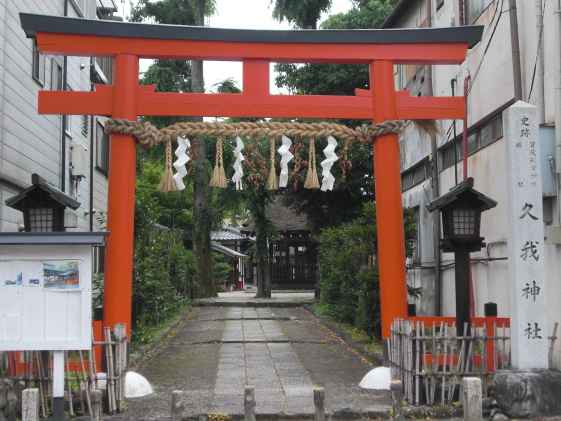 | 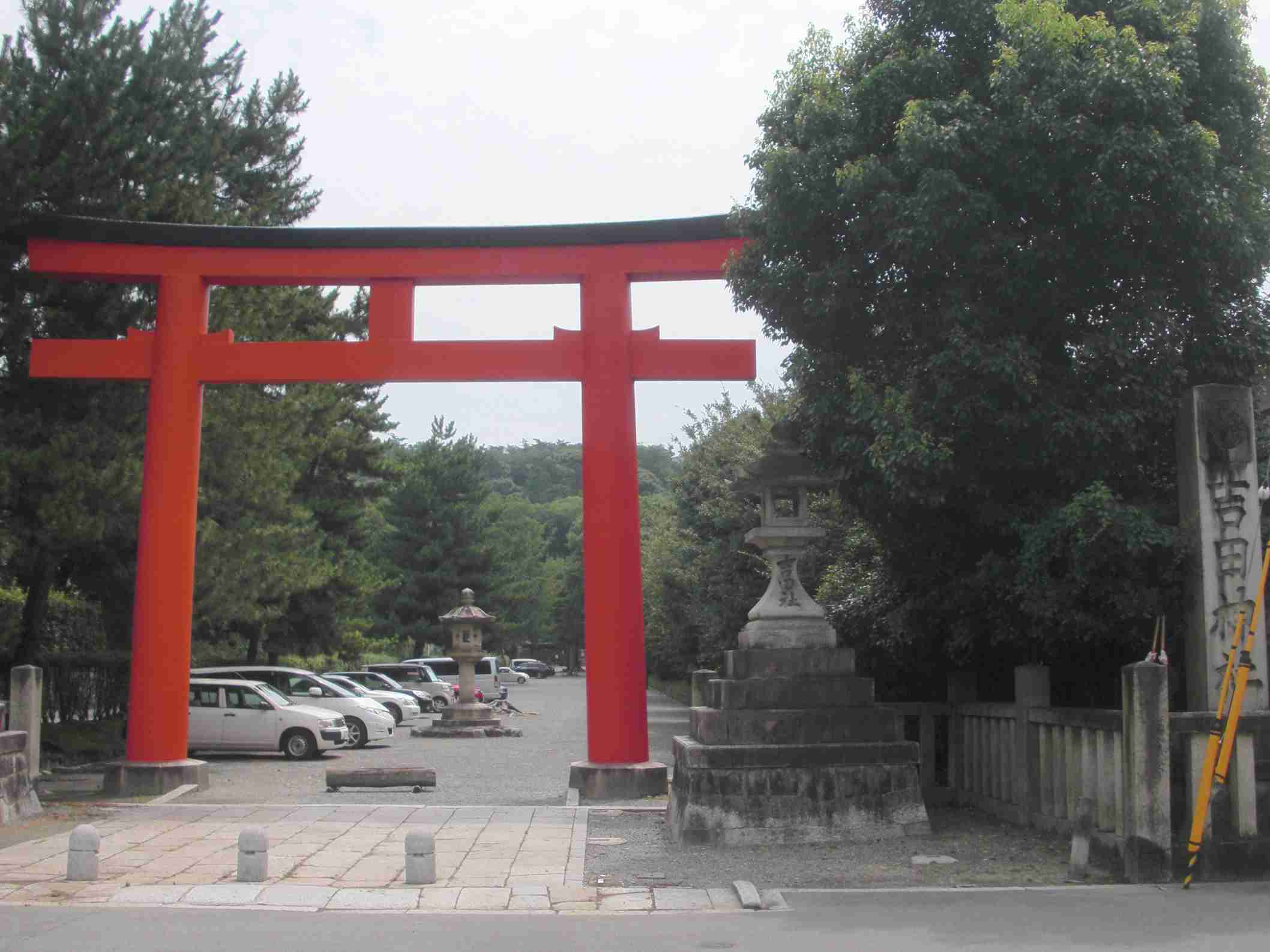 |
| Oomiya Ave. Gen'i below | Higashi-ichijo St. east end |
| (enshrined deity) Kamo-taketsunomi-no-Mikoto who is ancestor of Kamo families. | (enshrined deity) God of Kasuga who is ancestor of Fujiwara families. |
| 'Goou Shrine' (founded) unknown | 'Toyokuni Shrine' (founded) Keicho 4 (1599) |
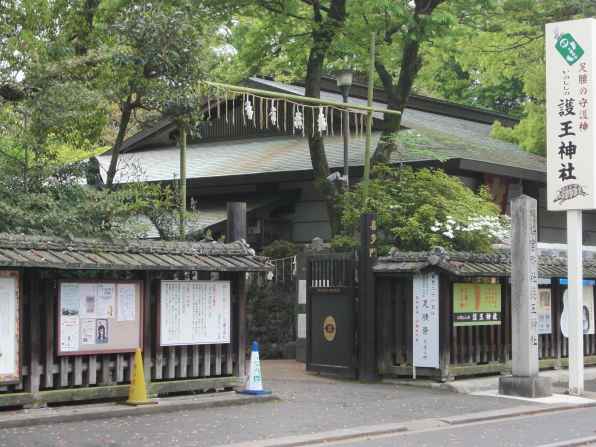 |  |
| Shimo-chojamachi St. Karasuma Ave. | Yamato-ooji Ave. Syomen St. |
| (enshrined deity) Wake no Kiyomaro who is one of the most faithful officer guarding emperors (8th Century). | (enshrined deity) Toyotomi Hideyoshi who was the first conqueror in period of Warring States (16th Century). |
| 'Kenkun Shrine' (founded) Meiji 2 (1869) | 'Nashinoki Shrine' (founded) Meiji 18 (1885) |
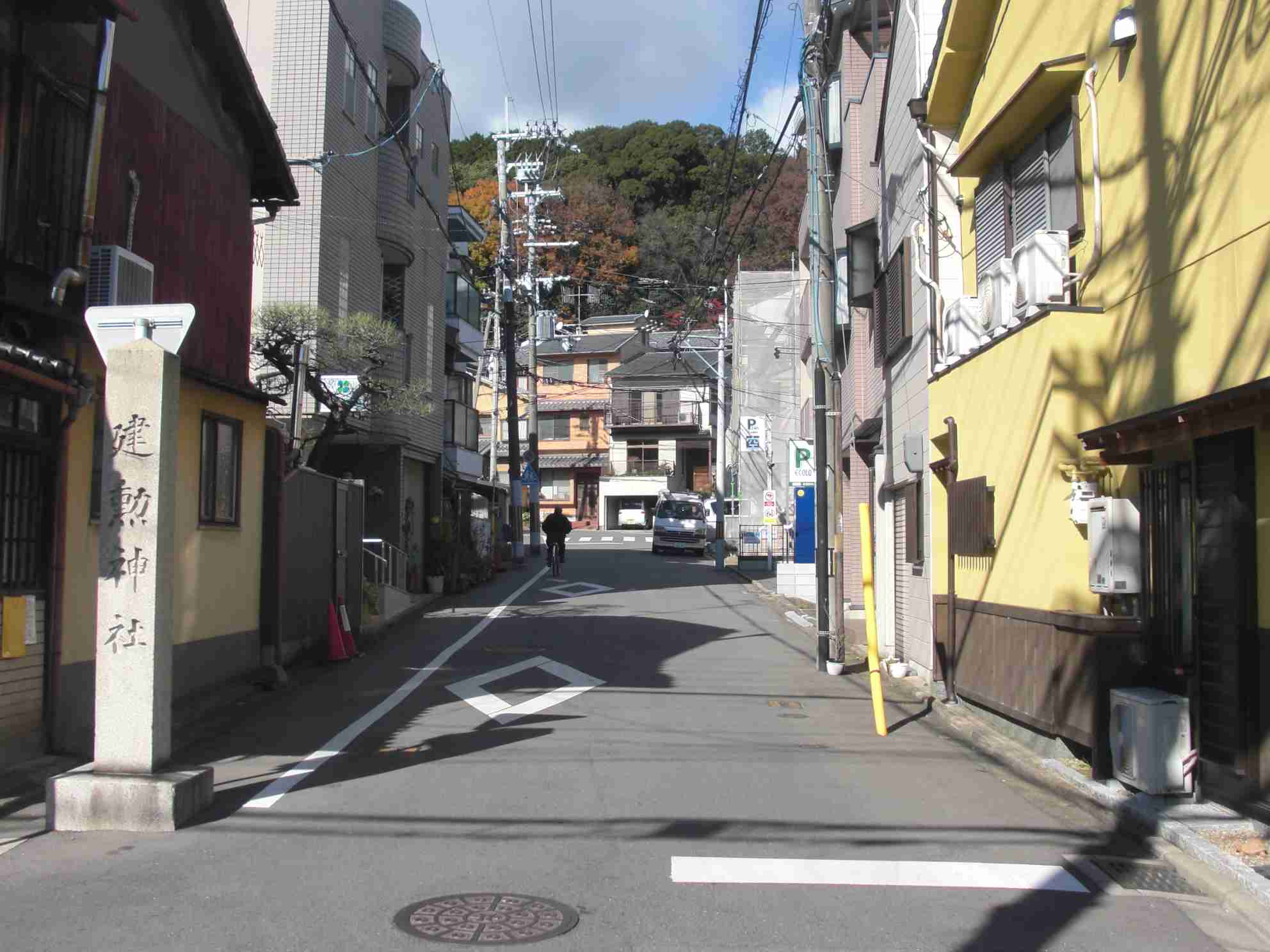 | 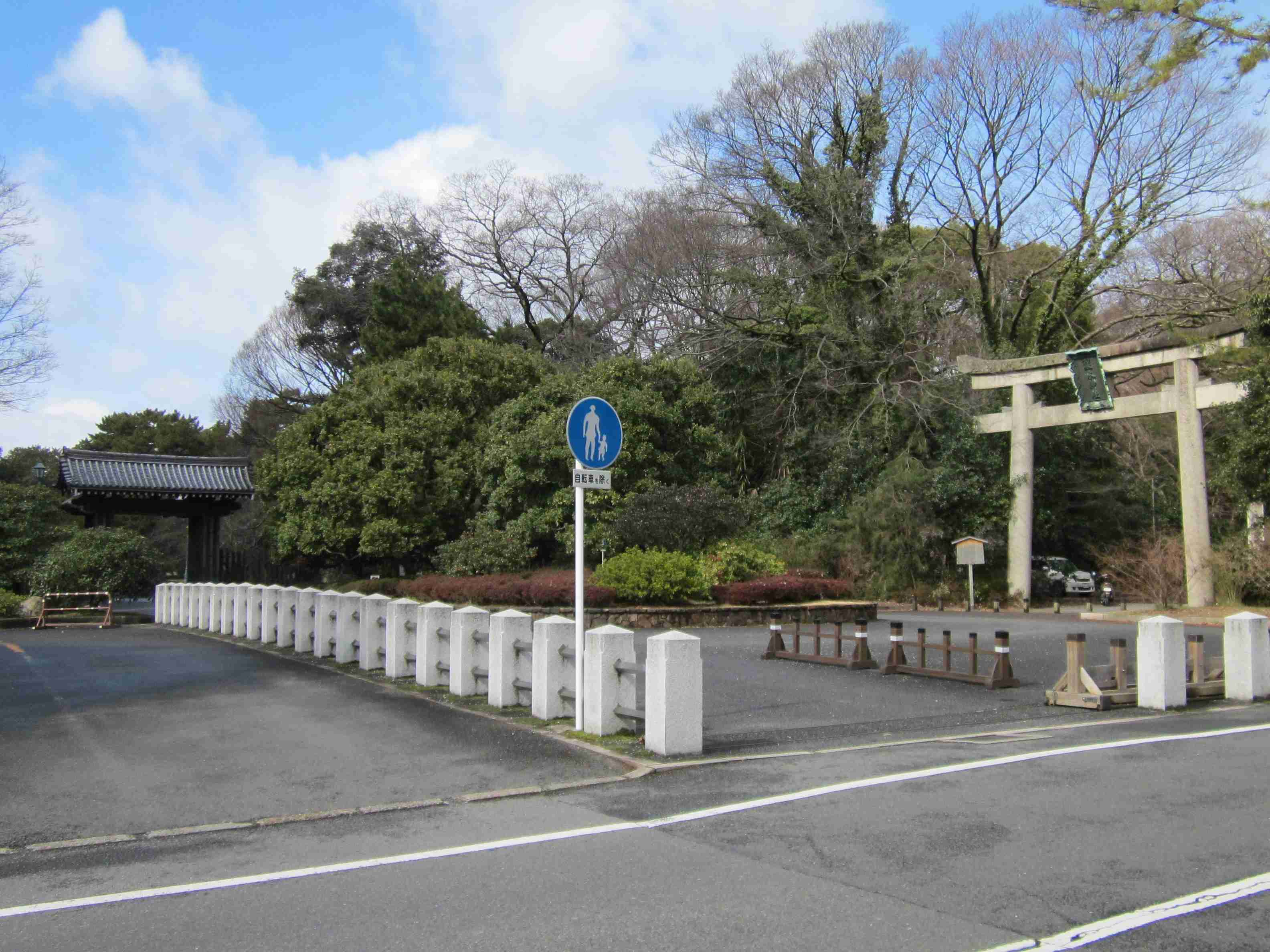 |
| further north from Jofukuji Ave. north end | Teramachi Ave. Hirokouji above |
| (enshrined deity) Oda Nobunaga who is the most famous commander with a military talent in 16th Century. | (enshrined deity) Sanjo Sanetomi who played a leading part of the Meiji Restoration in 1868. |
| 'Shiramine Shrine' (founded) Keio 4 (1868) | 'Kitano Tenman-gu' (founded) Tenryaku 1 (947) |
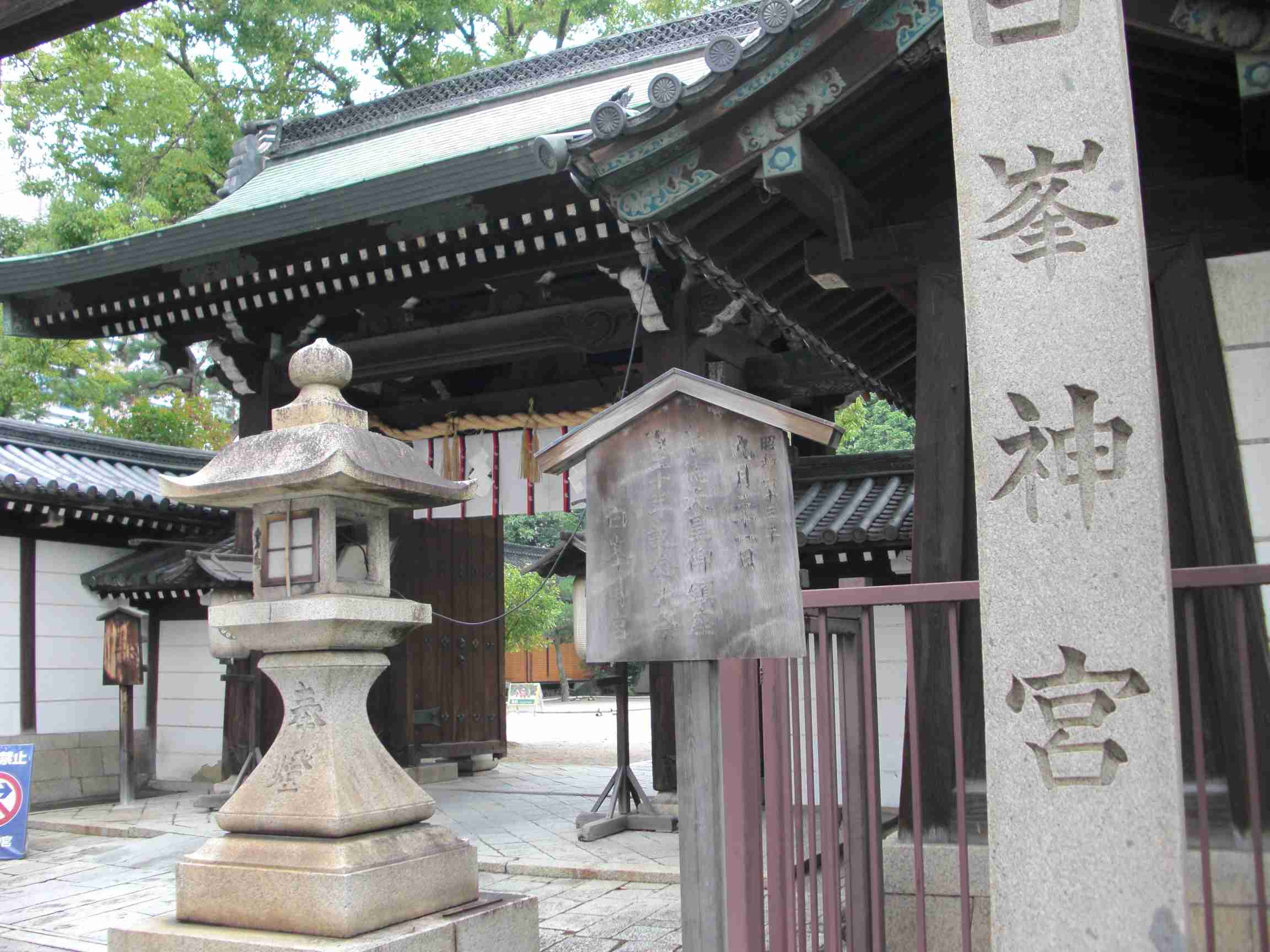 | 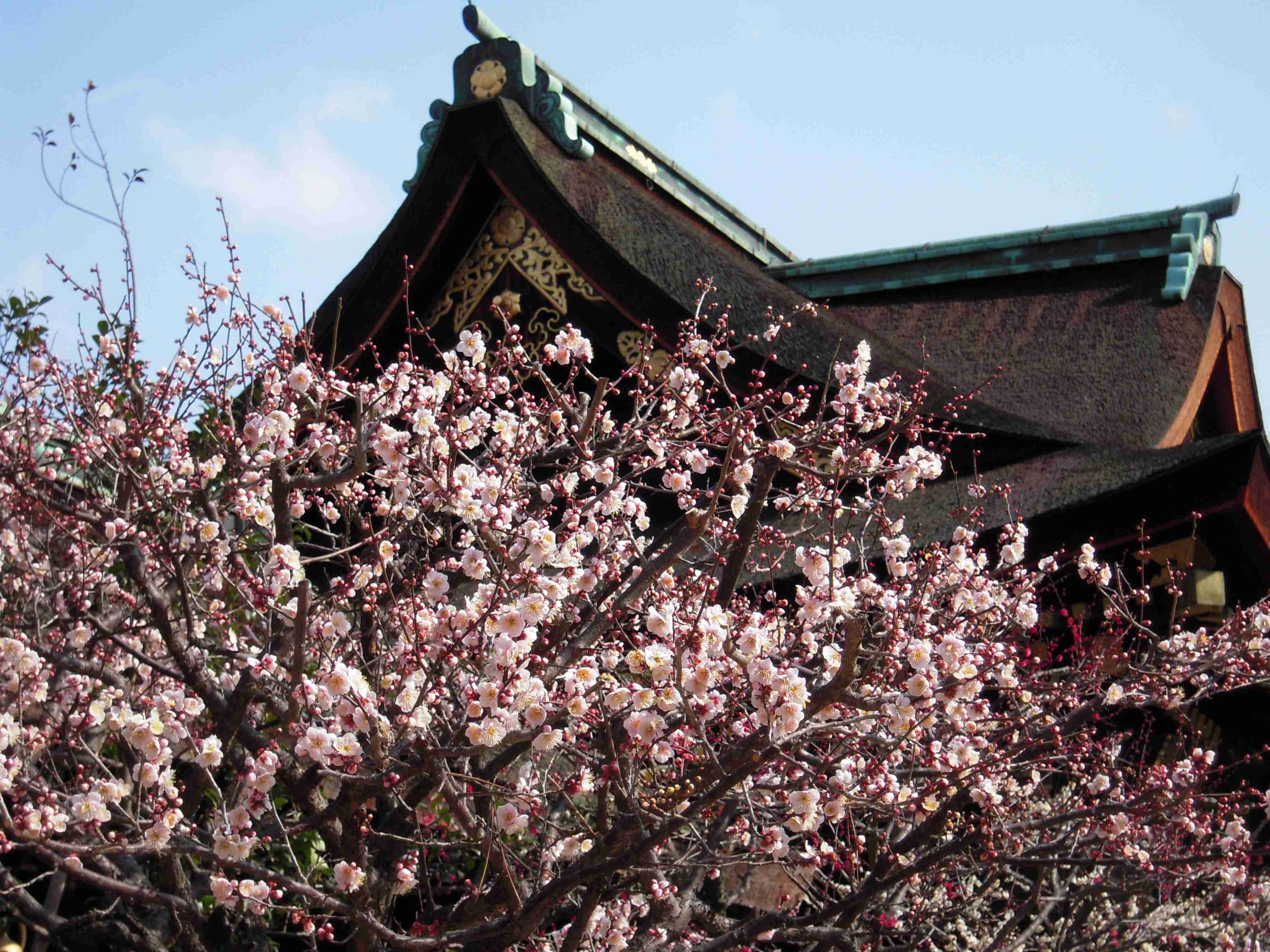 |
| Imadegawa St. Horikawa east-in | Imadegawa St. Onmae west-in |
| (enshrined deity) Emperor Sutoku who lost the combat against his younger brother and was exiled. | (enshrined deity) Sugawara no Michizane who lost political battle against Fujiwara and was exiled. |
| 'Goryo Shrine' (founded) Enryaku 13 (794) | 'Shimo-goryo Shrine' (founded) Jogan 5 (863) |
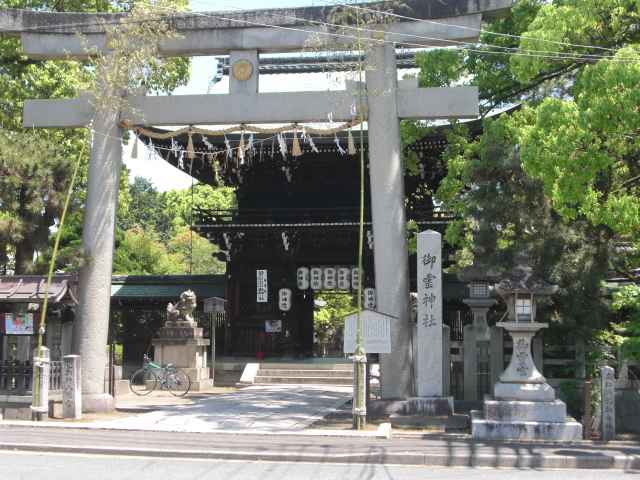 | 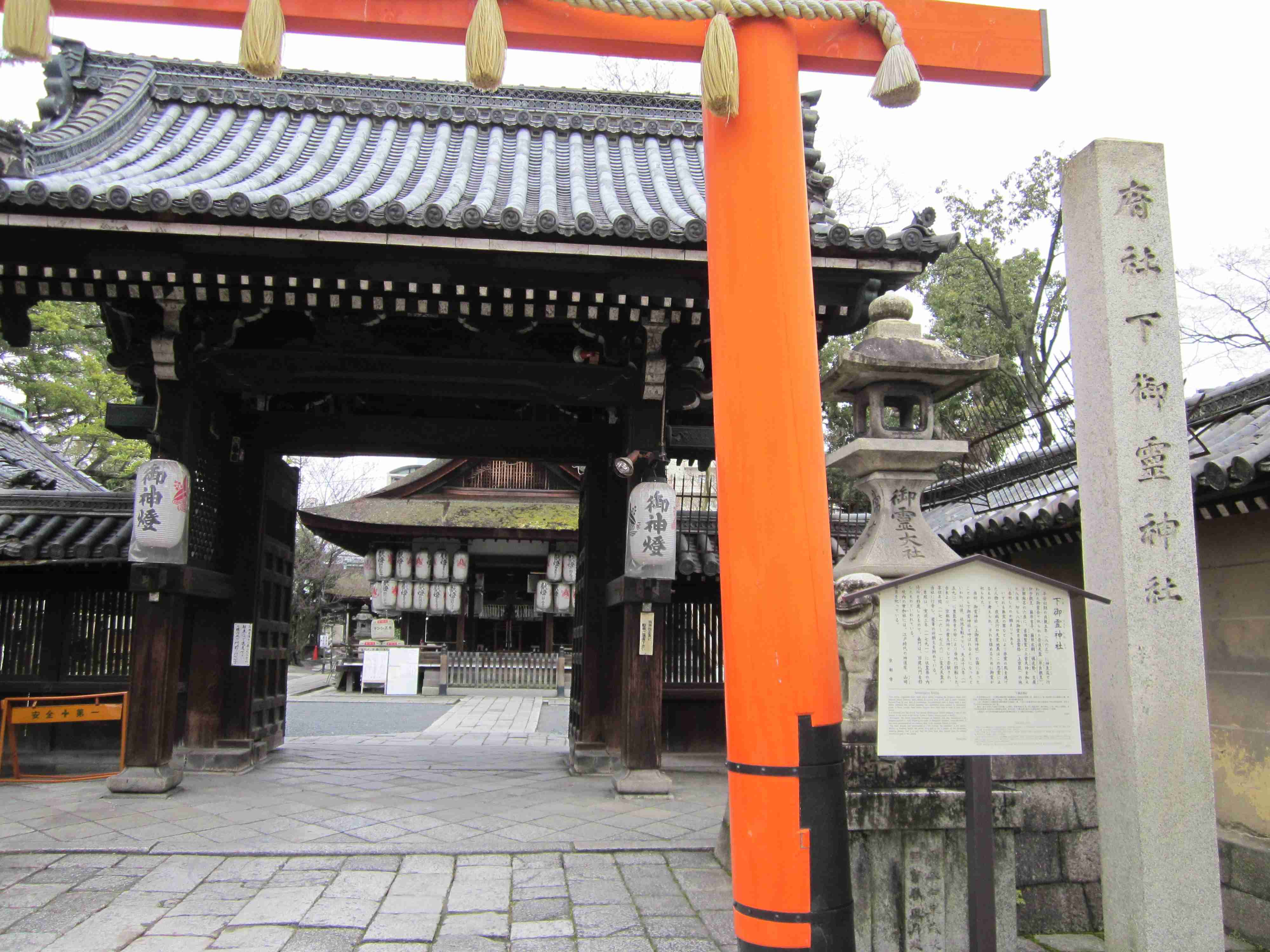 |
| Kami-goryomae St. east end (near Karasuma Ave.) | Teramachi Ave. Marutamachi below |
| (enshrined deity) Prince Sawara who was killed by his elder brother Emperor Kanmu. | (enshrined deities) eight tragic person's souls, for example Prince Sawara who is called Emperor Sudo. |
| 'Okazaki Shrine' (founded) Enryaku 13 (794) | 'Genbu Shrine' (founded) Gankyo (877-) |
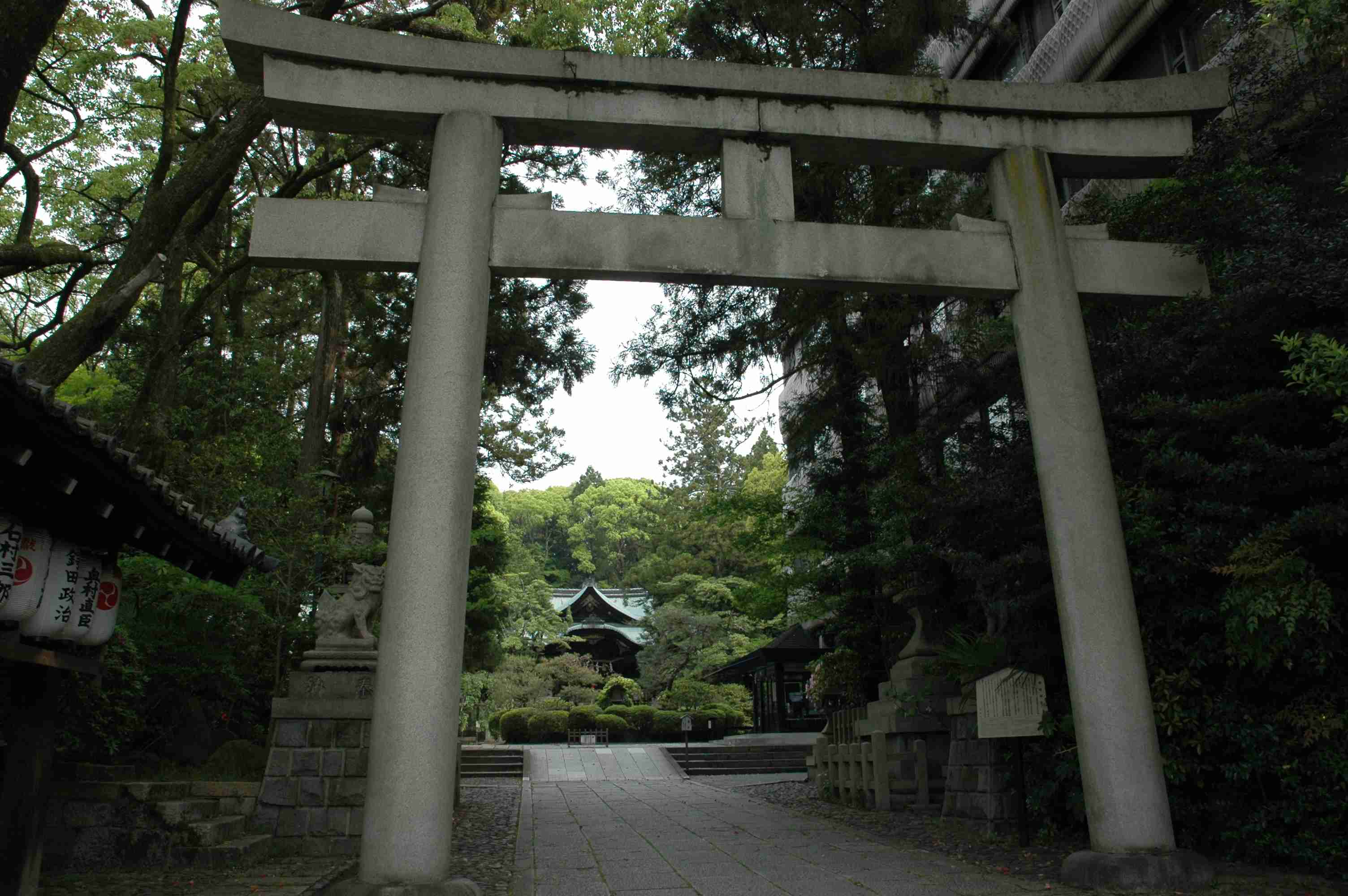 | 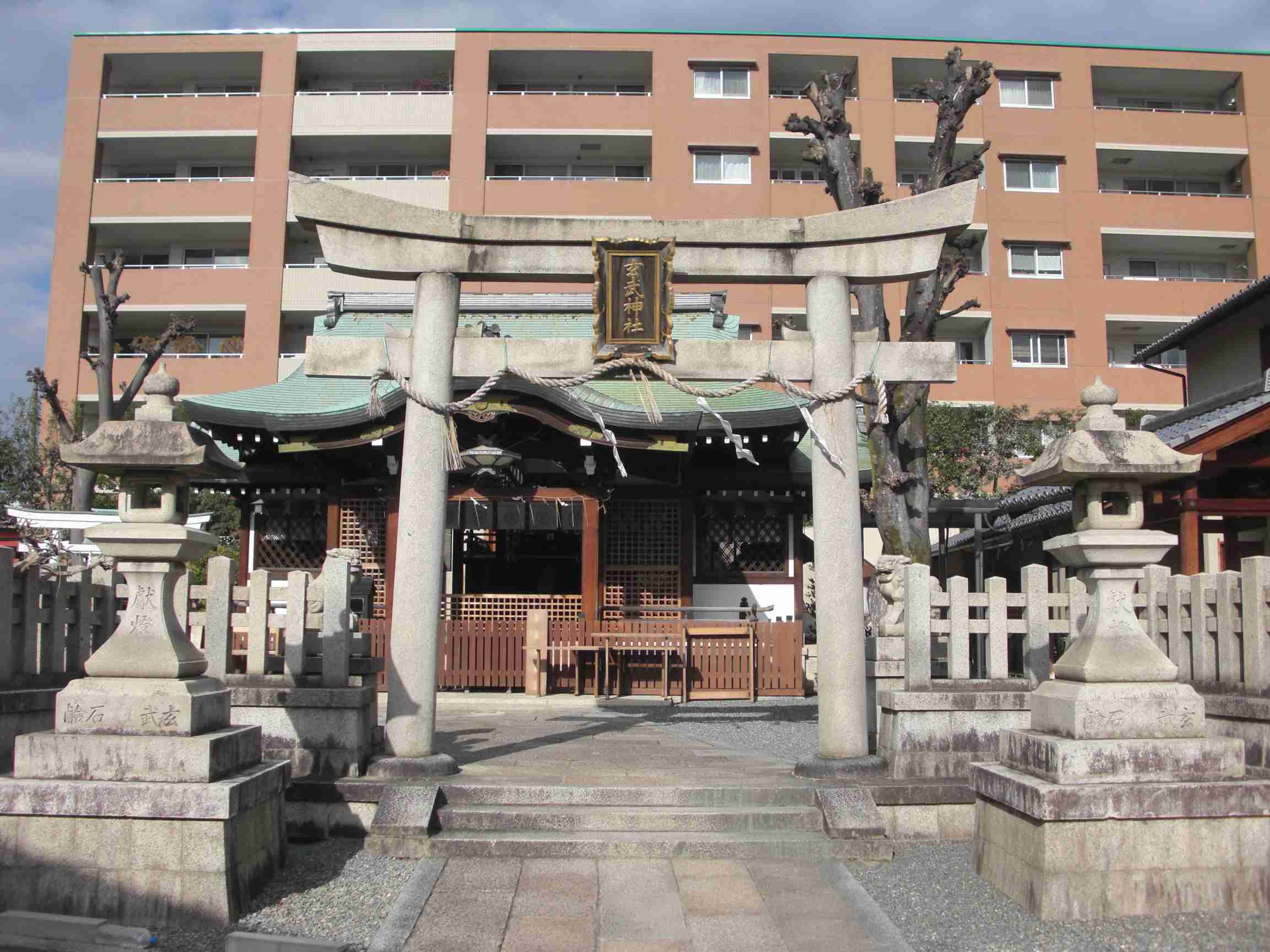 |
| Marutamachi St. Shirakawa west-in | Inokuma Ave. Kenkun above |
| (enshrined deity) Susano-wo-no-Mikoto who is guarding eastern part of Kyoto. | (enshrined deity) Prince Koretaka who is guarding northern part of Kyoto. |
| 'Ishii Shrine' (moved) Syowa 2 (1927) | 'Tanaka Shrine' (founded) Kouan (1278-) |
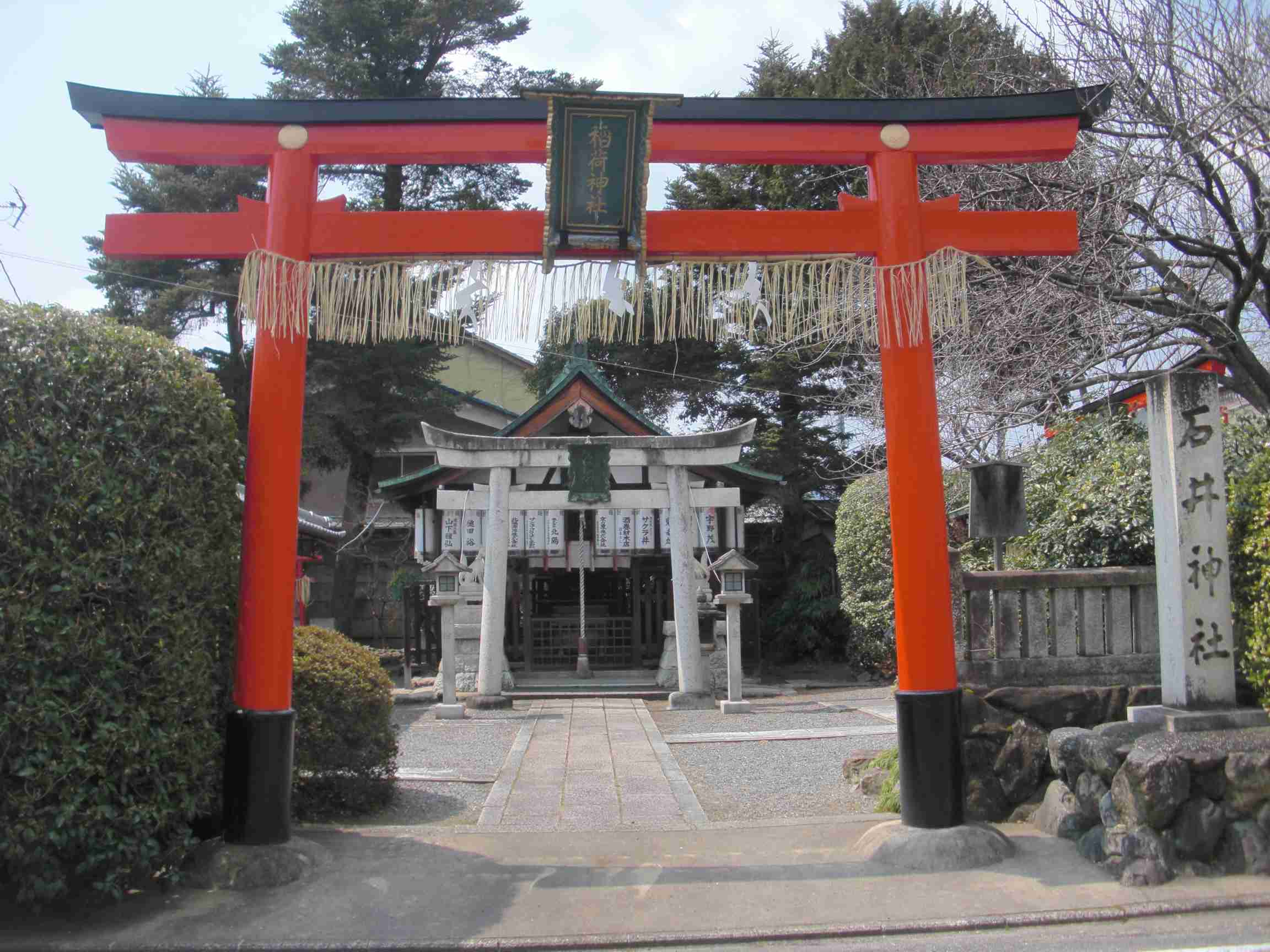 | 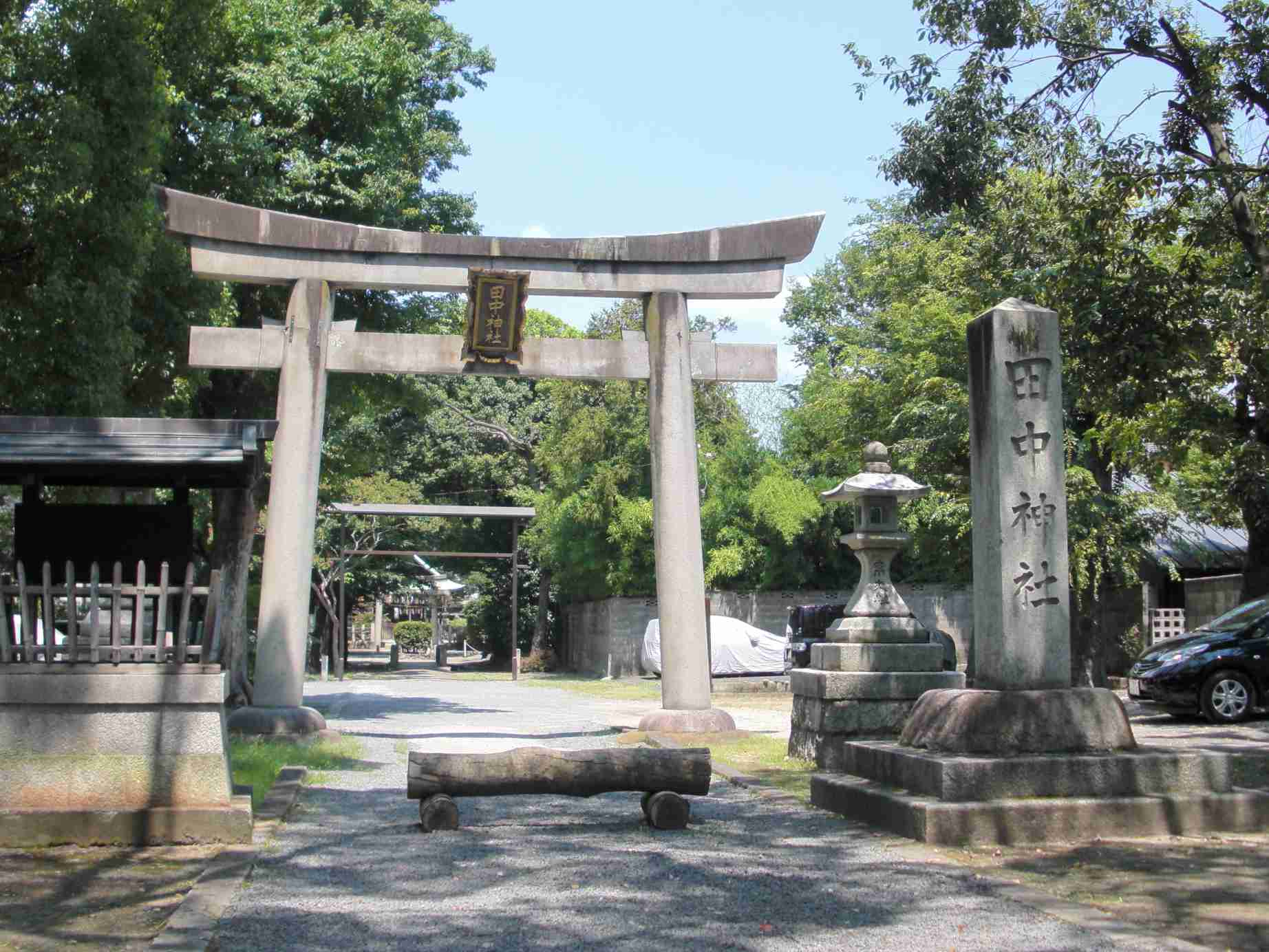 |
| Koromonotana Ave. Daimon below | Mikage St. Higashi-ooji west-in |
| (enshrined deities) Ishii-Inari-Ookami and so on who are guarding Koyama Village (northern area). | (enshrined deity) Okuni-Nushi-no-Mikoto who is guarding Tanaka Village (northern area). |
| 'Suga Shrine' (founded) Jogan 11 (869) | 'Ichihime Shrine' (founded) Enryaku 14 (795) |
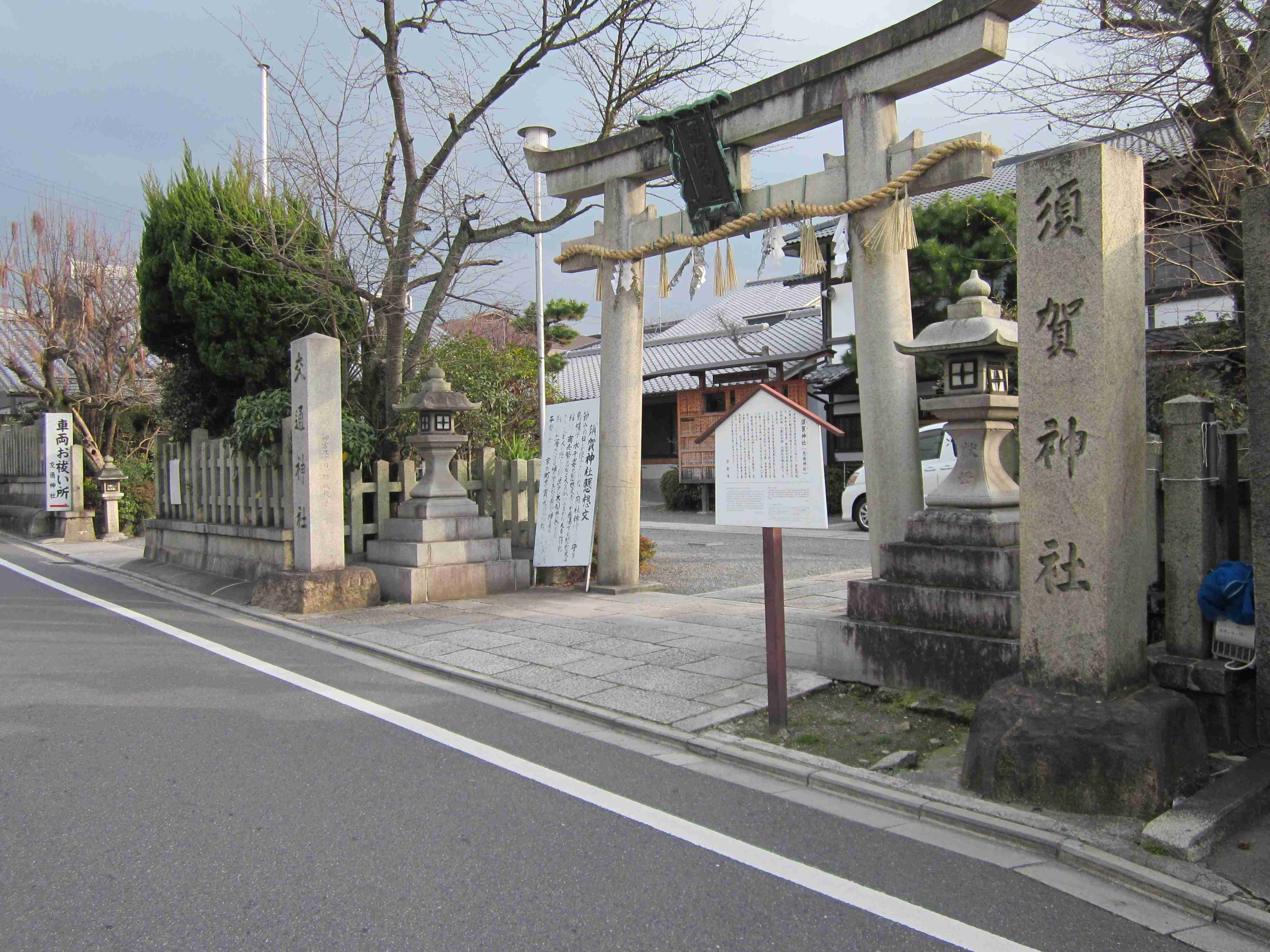 | 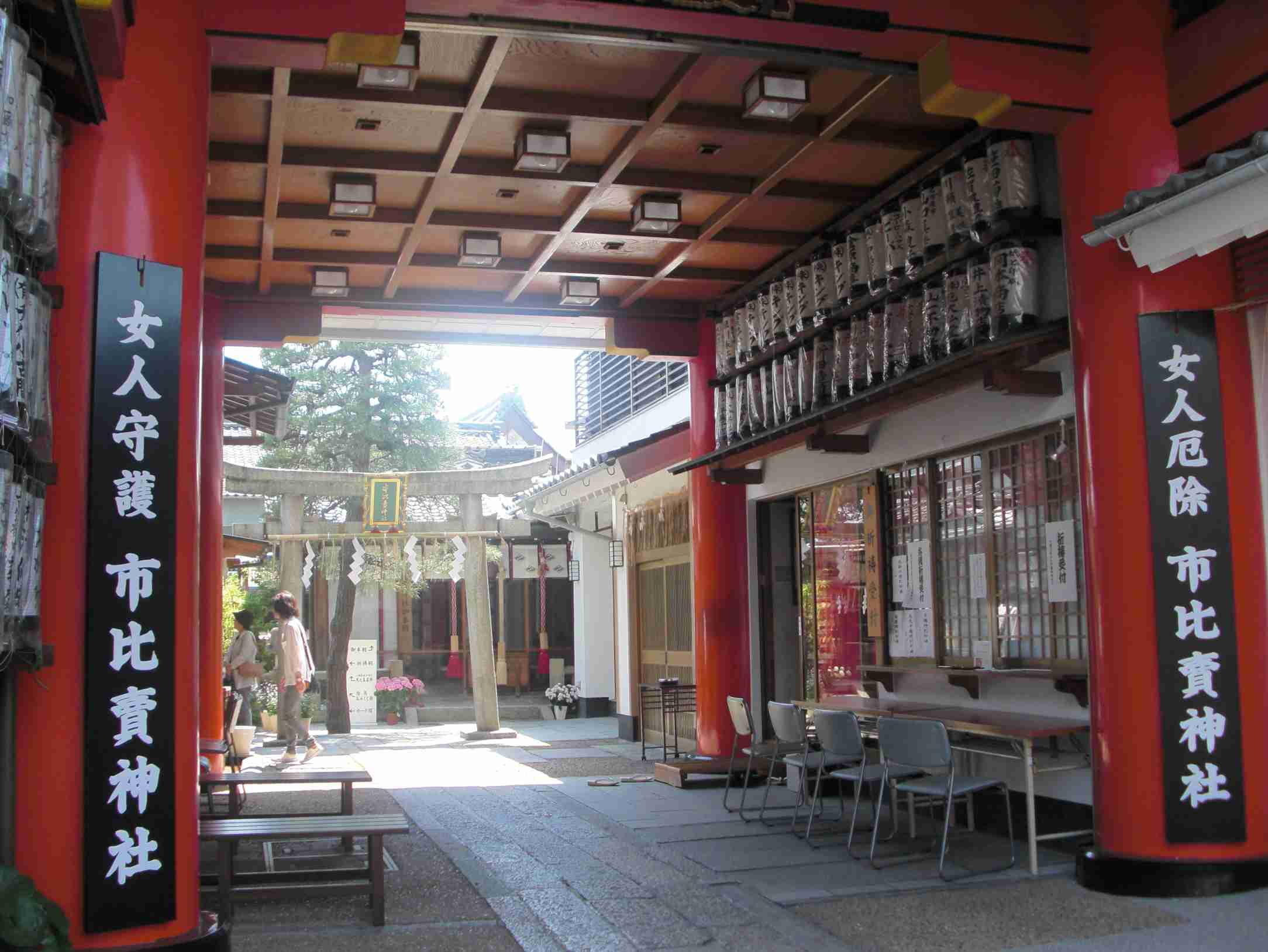 |
| Kasuga-kami St. Yoshida-higashi west-in | Kawaramachi Ave. Gojo below |
| (enshrined deities) Susano-wo-no-Mikoto and so on who are guarding Syogoin Village (eastern area). | (enshrined deities) Takiri-Hime-no-Mikoto and so on who are guarding Eastern and Western Market. |
| 'Fukunaga Shrine' (transfered) Tensho (1573-) | 'Nakayama Shrine' (founded) Enryaku 13 (794) |
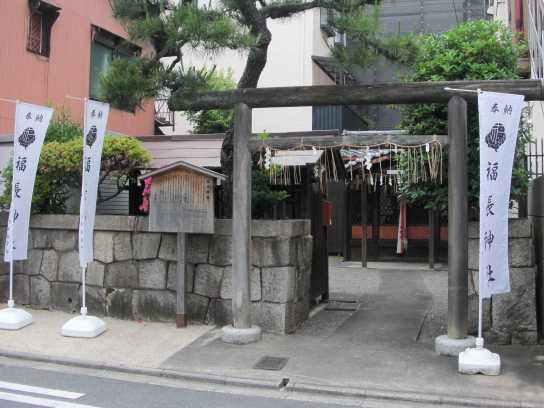 | 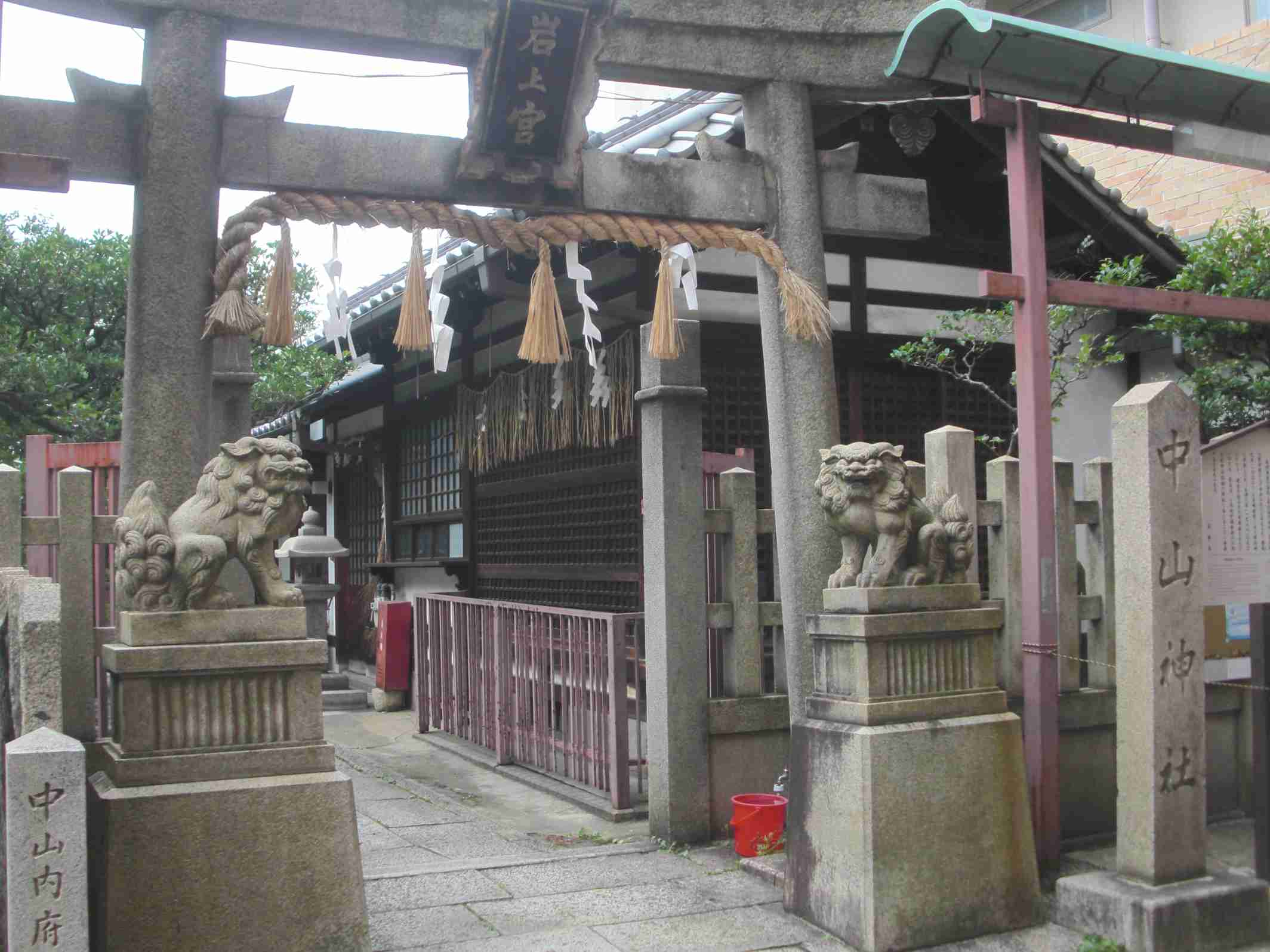 |
| Muromachi Ave. Musyakouji below | Iwagami Ave. Rokkaku below |
| (enshrined deities) Sakui God and Tsunagai God who are guarding wells on the court. | (enshrined deities) Susano-wo-no-Mikoto and so on who are guarding gates of the Imperial Palace. |
| 'Shikiti Shrine' (founded) unknown | 'Iwagami Shrine' (founded) unknown |
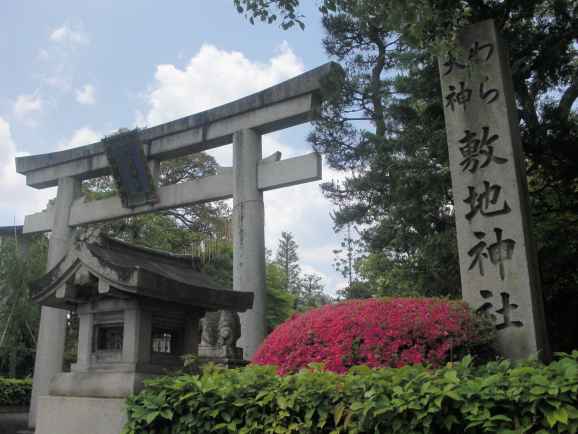 | 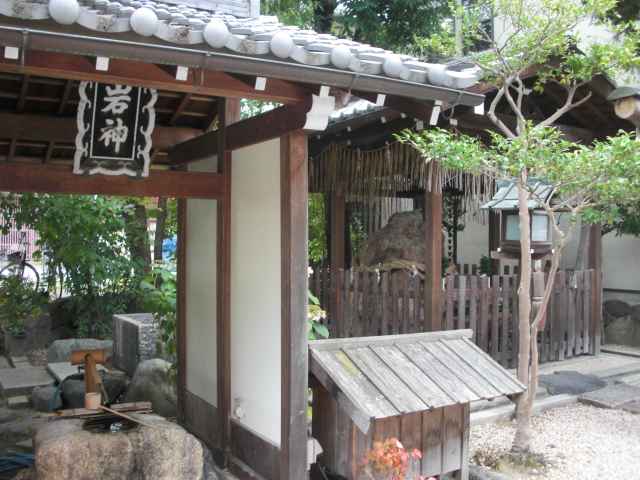 |
| Nishi-ooji Ave. Rozanji above | Kami-dachiuri St. Jofukuji east-in |
| (enshrined deities) Ancient local Gods who descended to Kinugasa Village (northern area). | (enshrined deity) Giant Stone(right hand side in above picture) which dropped here a long long time ago. |
| 'Hirano Shrine' (transfered) Enryaku 13 (794) | 'Hakusan Shrine' (moved) Jisho (1177-) |
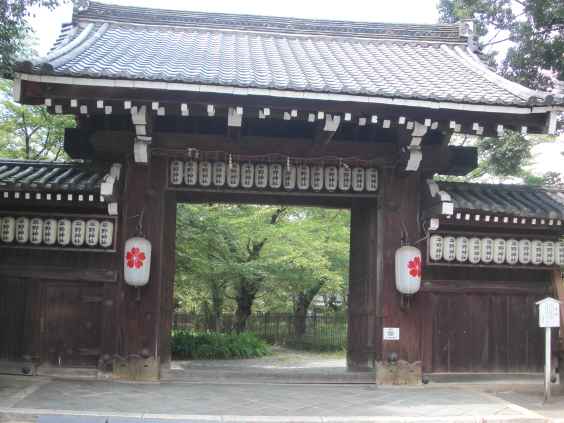 |  |
| Nishi-ooji St. Kami-dachiuri Ave. | Fuyacho Ave. Oshikouji below |
| (enshrined deities) Imaki-Ookami and so on who were moved from Heijo-kyo (former Capital Nara) | (enshrined deity) Kikuri-Hime who were moved from current Ishikawa prefecture. |
| 'Izumo-Taisya Kyoto Church' (founded) (1927) | 'Kumano Shrine' (founded) Kounin 2 (811) |
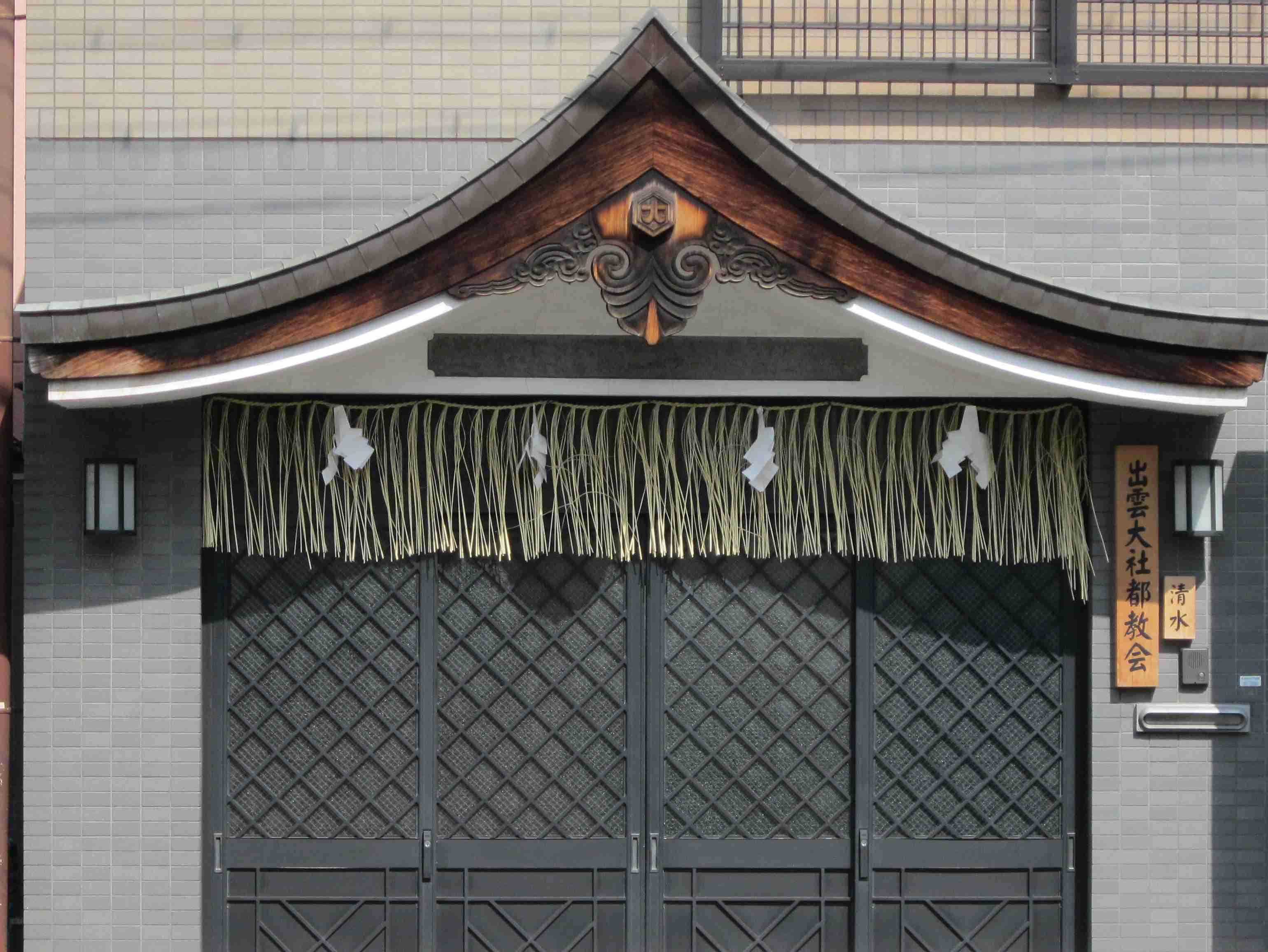 | 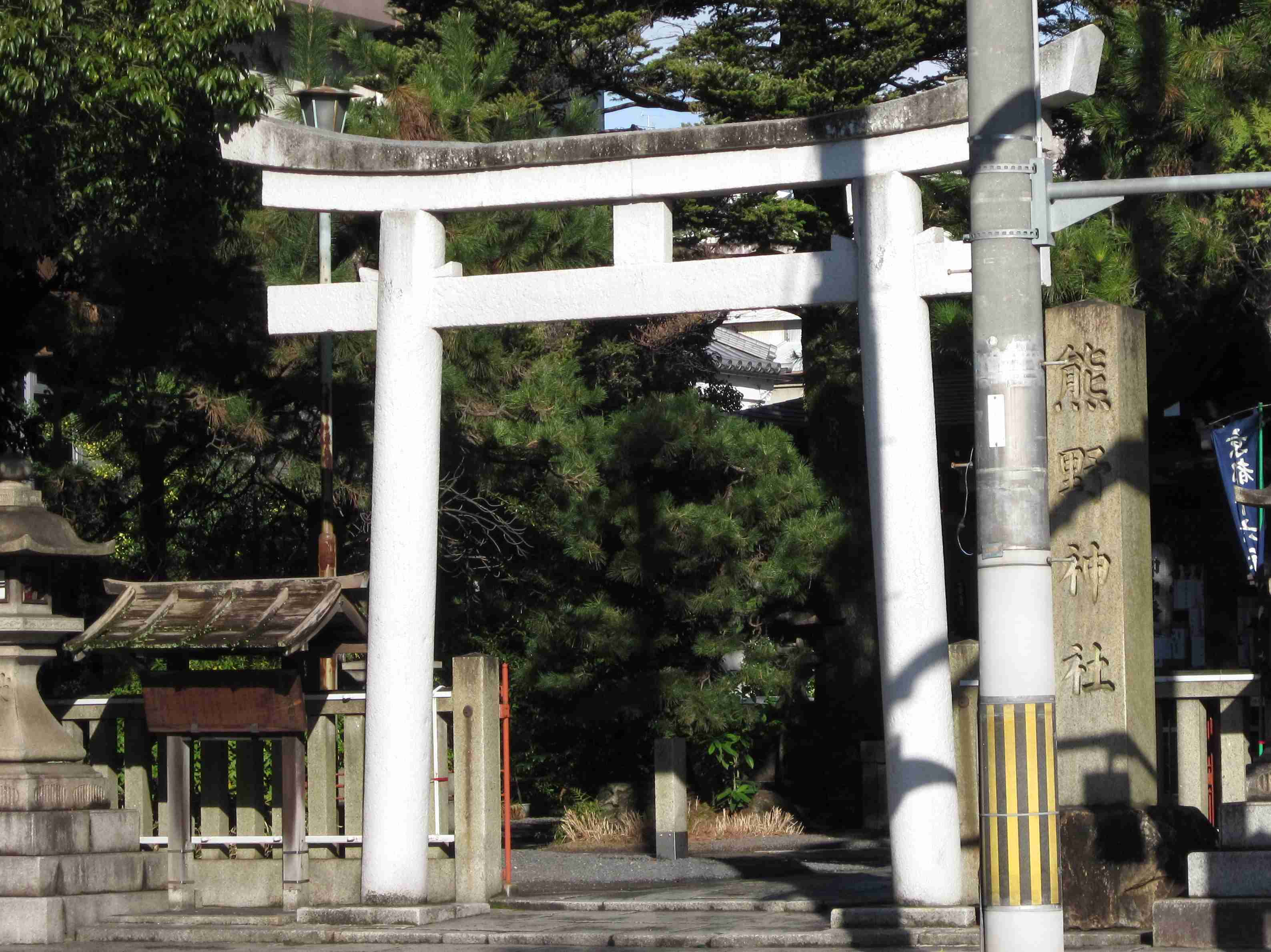 |
| Marutamachi St. Oomiya west-in | Marutamachi St. Higashi-ooji Ave. |
| One of Branches in Kyoto. Main Shrine is Izumo-Taisya is located at current Shimane prefecture. | One of Branches in Kyoto. Main Shrine is Kumano Shrine is located at current Wakayama prefecture. |
| 'Himukai Dai Jingu Shrine' (founded) (485-) | 'Kyoto Dai Jingu Shrine' (founded) Meiji 6 (1873) |
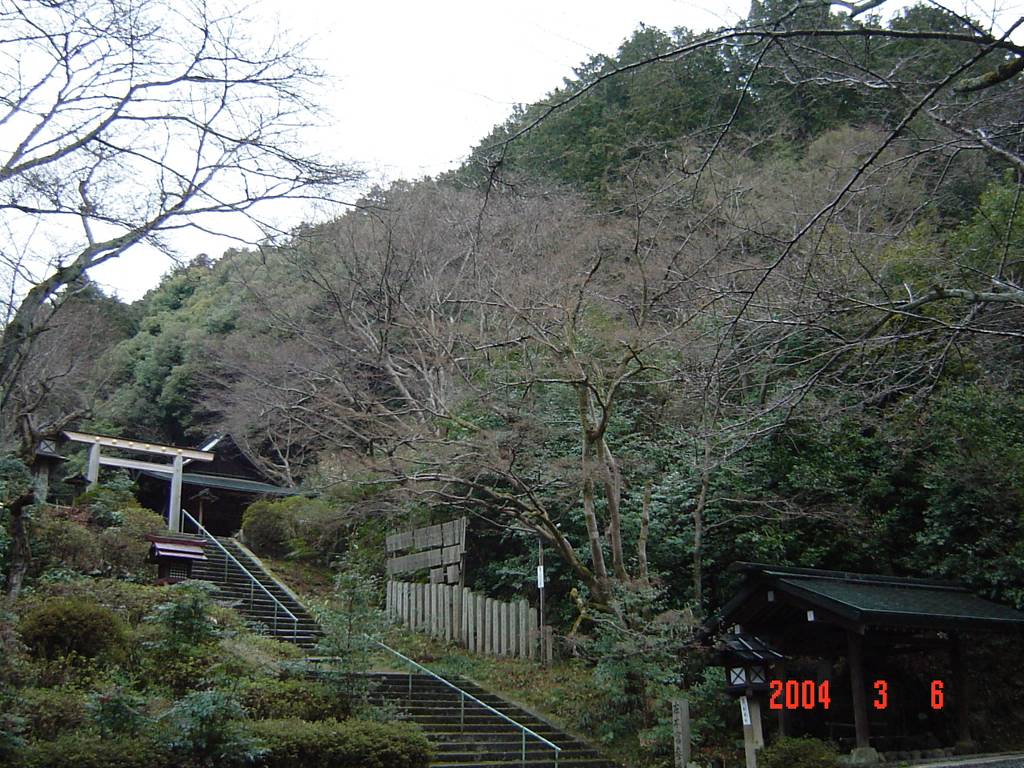 | 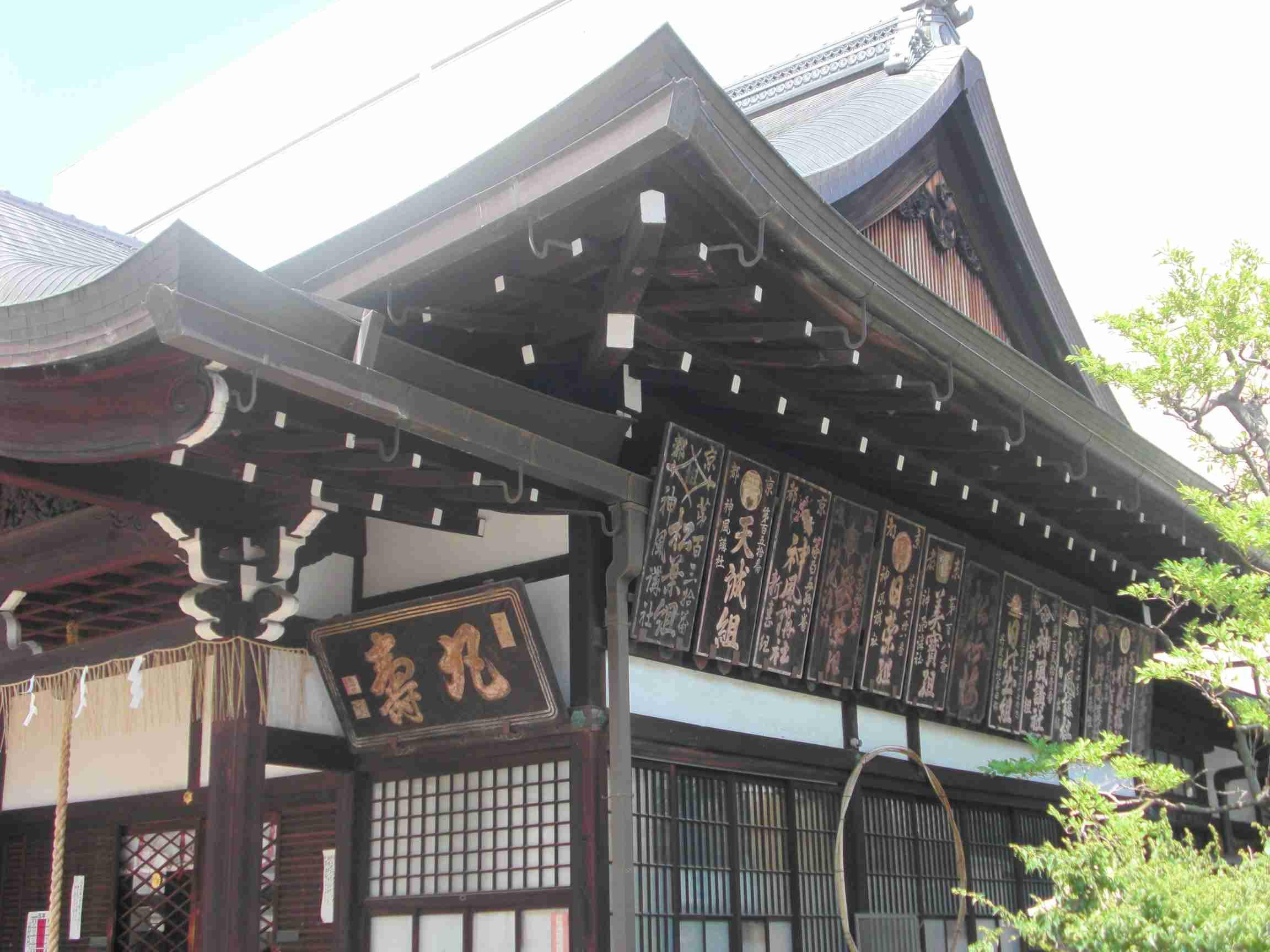 |
| further east from Sanjo St. east end | Teramachi Ave. Shijo below |
| (enshrined deities) Amaterasu-Omikami and so on. You can pray in the direction of Ise Jingu here. | (enshrined deities) Amaterasu-Omikami and so on. You can pray to Ise deities here. |
| 'Otabisho of Imamiya Shrine' (founded) unknown | 'Tyurensho of Kitano Tenman-gu' (founded) unknown |
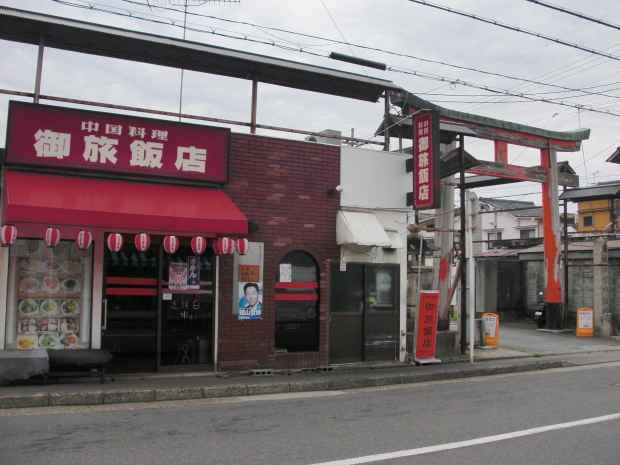 | 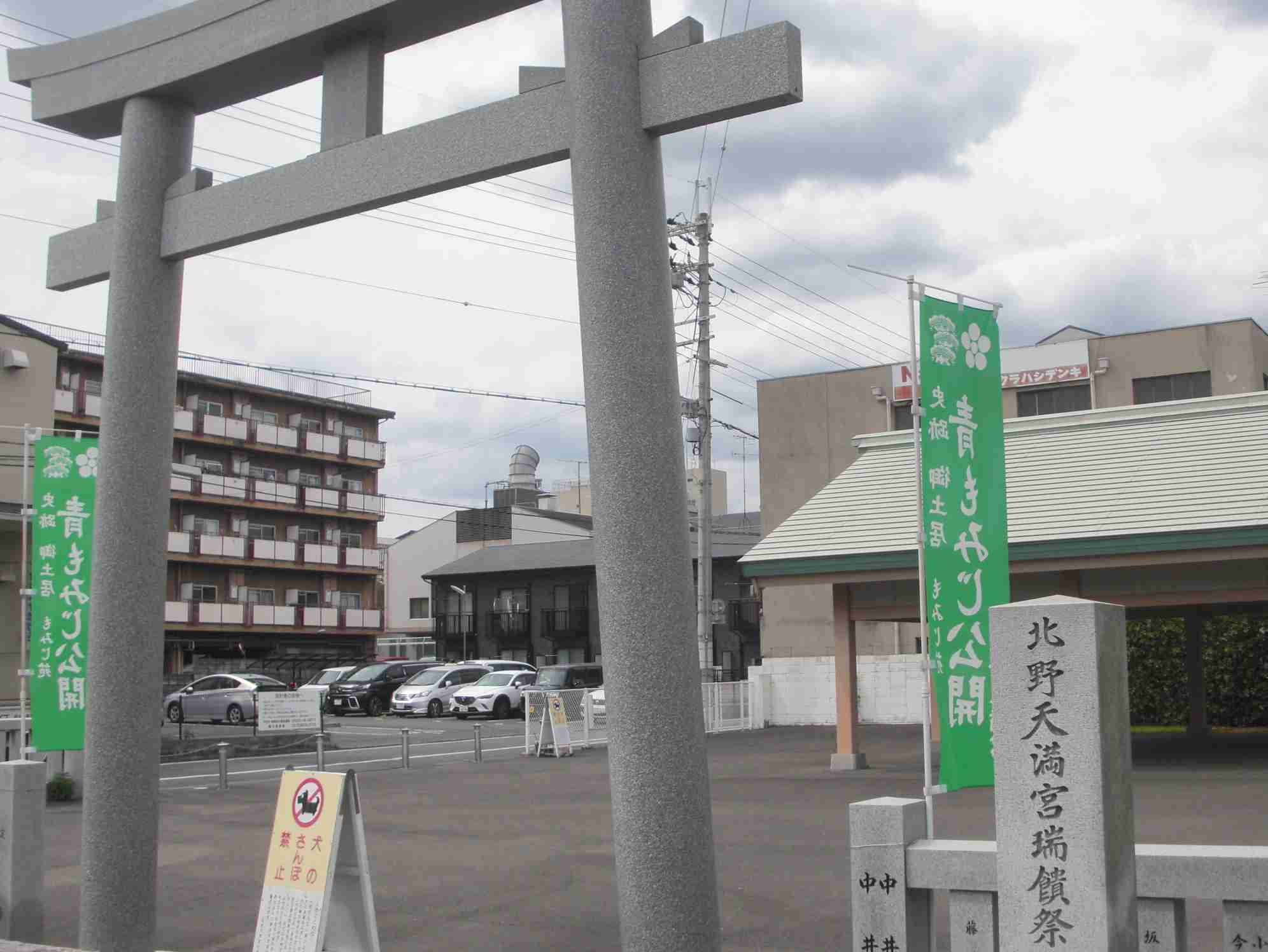 |
| Oomiya Ave. Kenkun above | Sanjo St. Tenjin west-in |
| 'Otabisho' is a Lodge for the sacred palanquins, when Imamiya festival. It is using from ancient time. | 'Tyurensho' is a Parking Lot in accuracy. When 'Zuiki festival', it is used for the sacred palanquins. |
| 'Matatabisya of Yasaka Shrine' (founded) (1906) | 'Otabisho of Yasaka Shrine' (founded) (1591) |
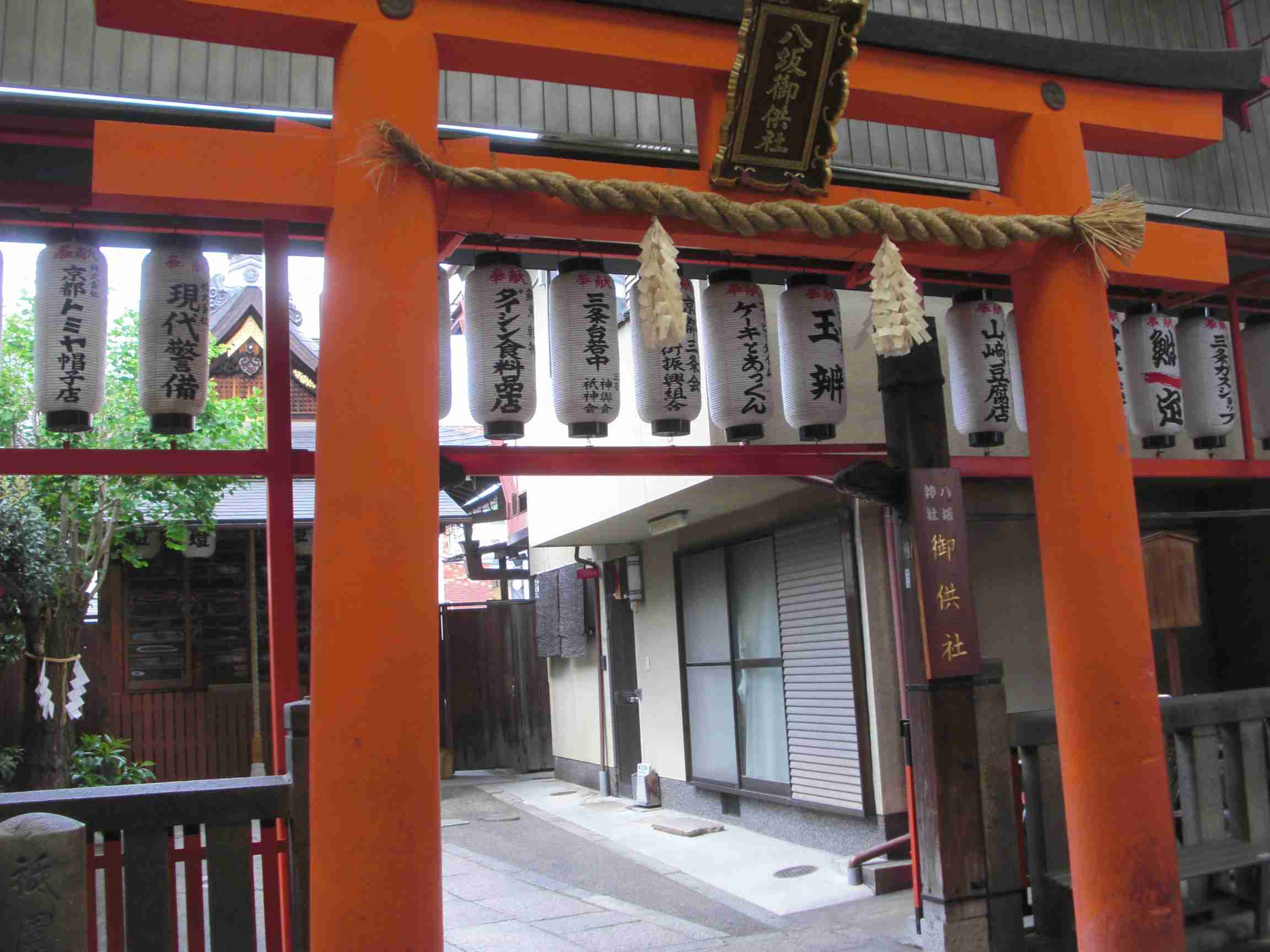 | 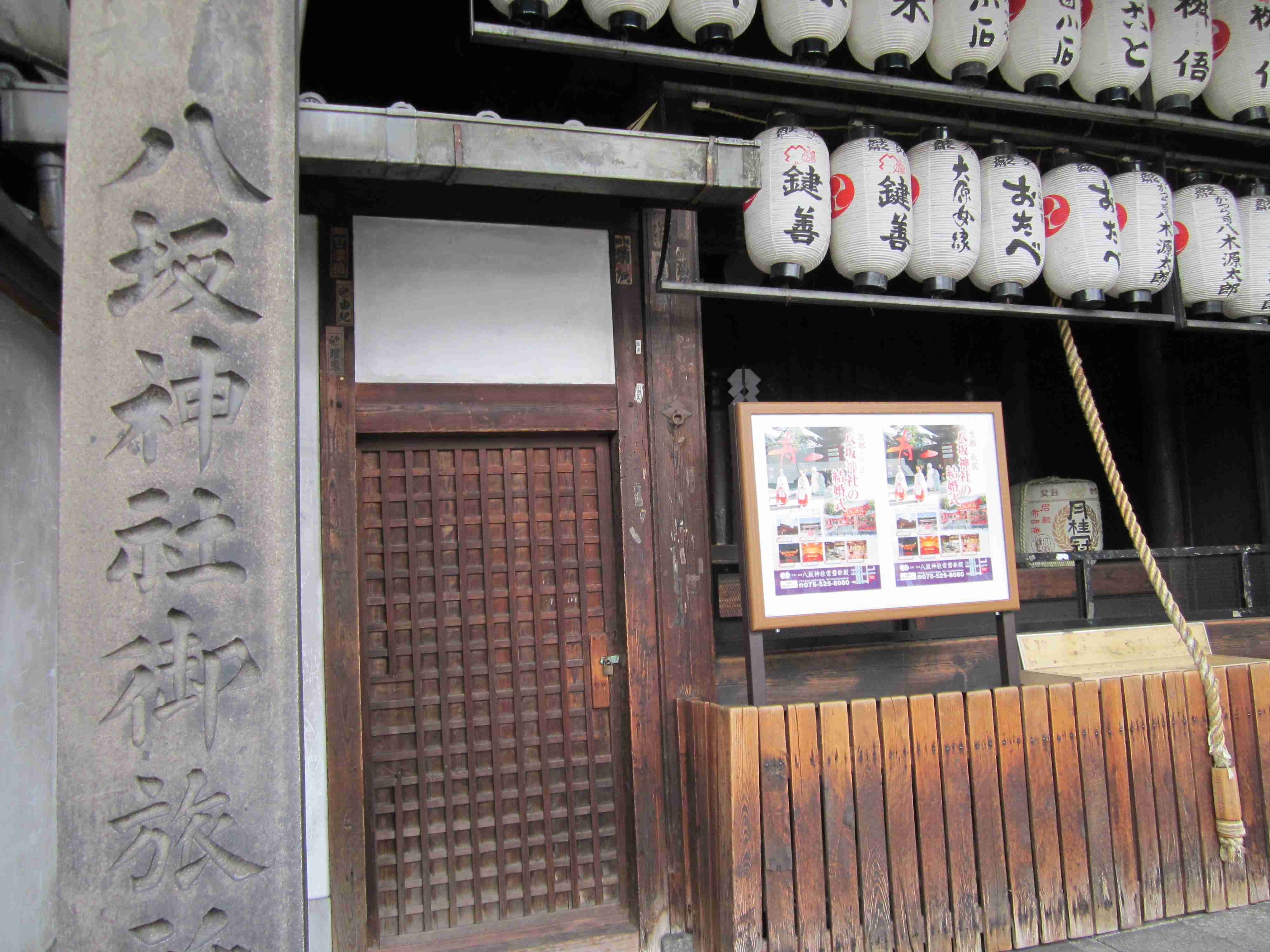 |
| Sanjo St. Kuromon west-in | Shijo St. Teramachi east-in |
| 'Matatabisho' is a Lodge also, but this became to branch of Yasaka Shrine from 1906. | 'Oomandokoro-mikoshi' and 'Shoshoui-mikoshi' together Yasaka sacred palanquins are lodged here, too. |
- There are many 'Otabisho' in Kyoto. For example
- 'Otabisho' of 'Sagi-no-mori Shrine' (located at Shirakawa Ave. Kitayama above and Higashi-ooji Ave. Kitayama below). 'Sagi-no-mori Shrine' is located further east from 'Otabisho'.
- 'Otabisho' of 'Okazaki Shrine' (located at Marutamachi St. Okazaki east-in). 'Okazaki Shrine' is located at Marutamachi St. Shirakawa west-in.
| 'Takenobu Inari Shrine' (founded) Jogan 1 (859) | 'Oomiya-Hime-no-Mikoto Inari' (founded) (807) |
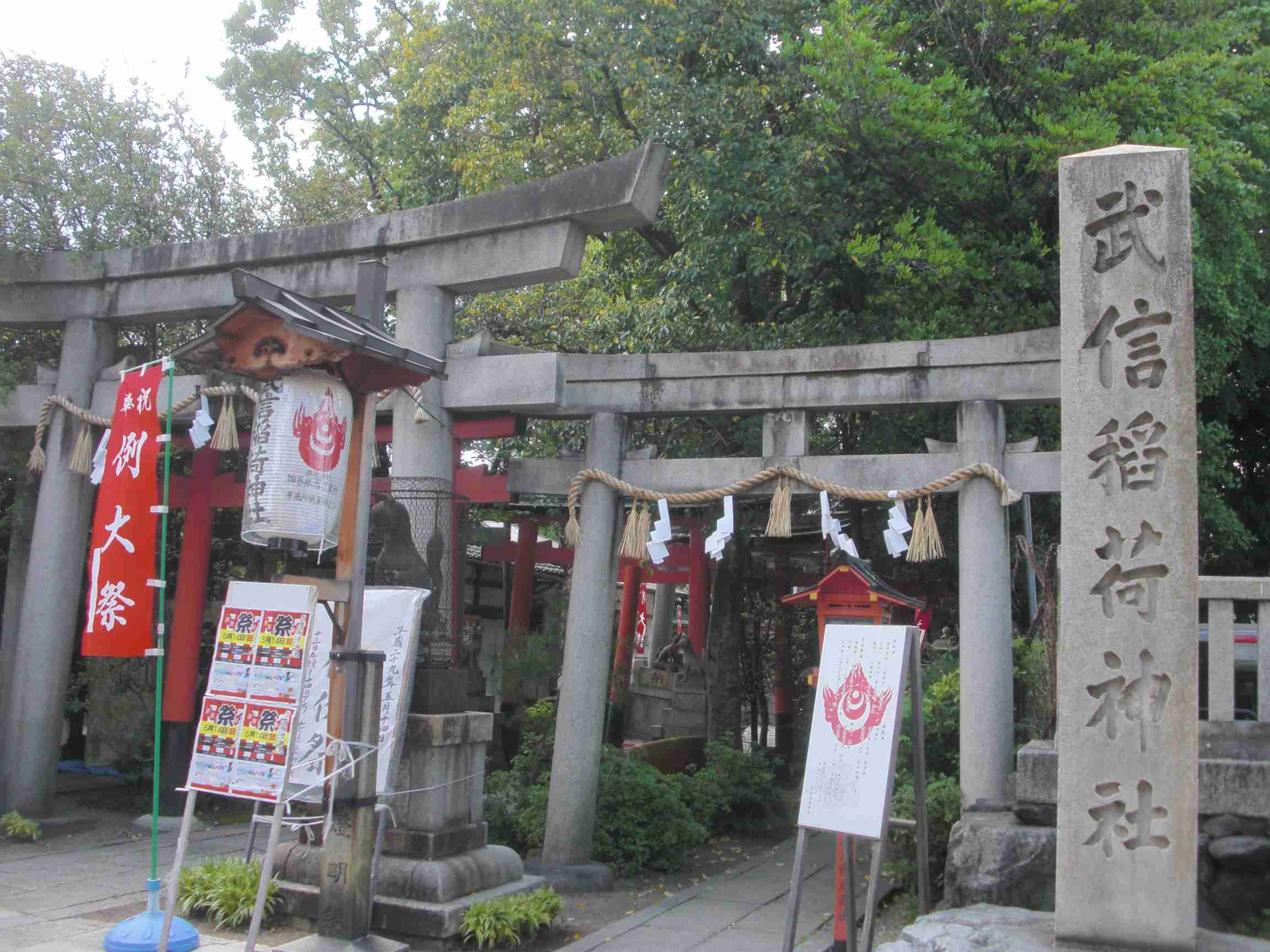 | 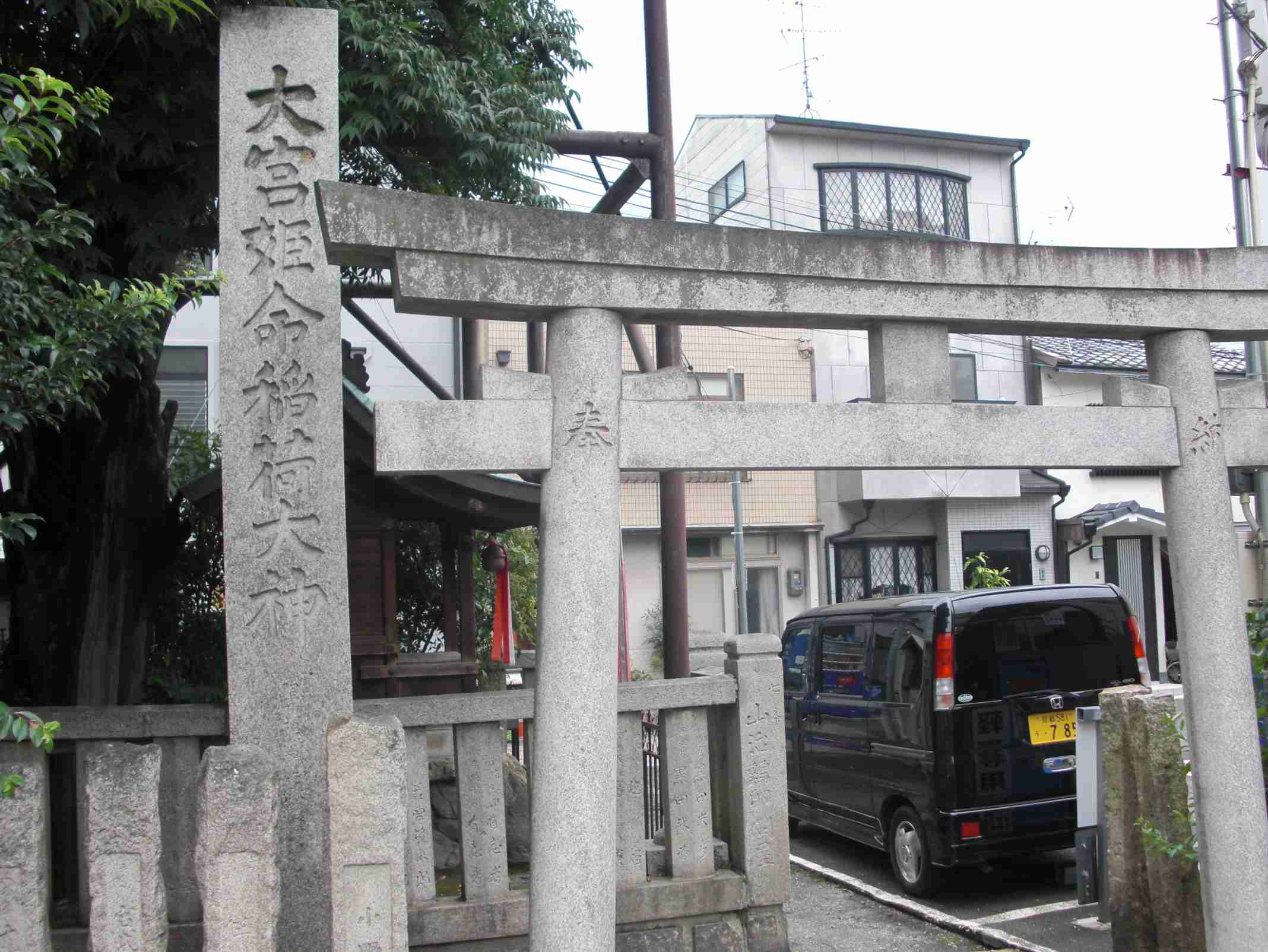 |
| Rokkaku St. Shinsen-en west-in | Takeyamachi St. Bifuku west-in |
| Pilgrims pray for the 'victory in battles' and 'naming for happiness'. | It worships the 6th God 'Oomiya-no-me' who guards imperial families. |
| 'Otatsu Inari Shrine' (founded) Hoei 2 (1705) | 'Syusse Inari Shrine' (founded) Tensho 15 (1587) |
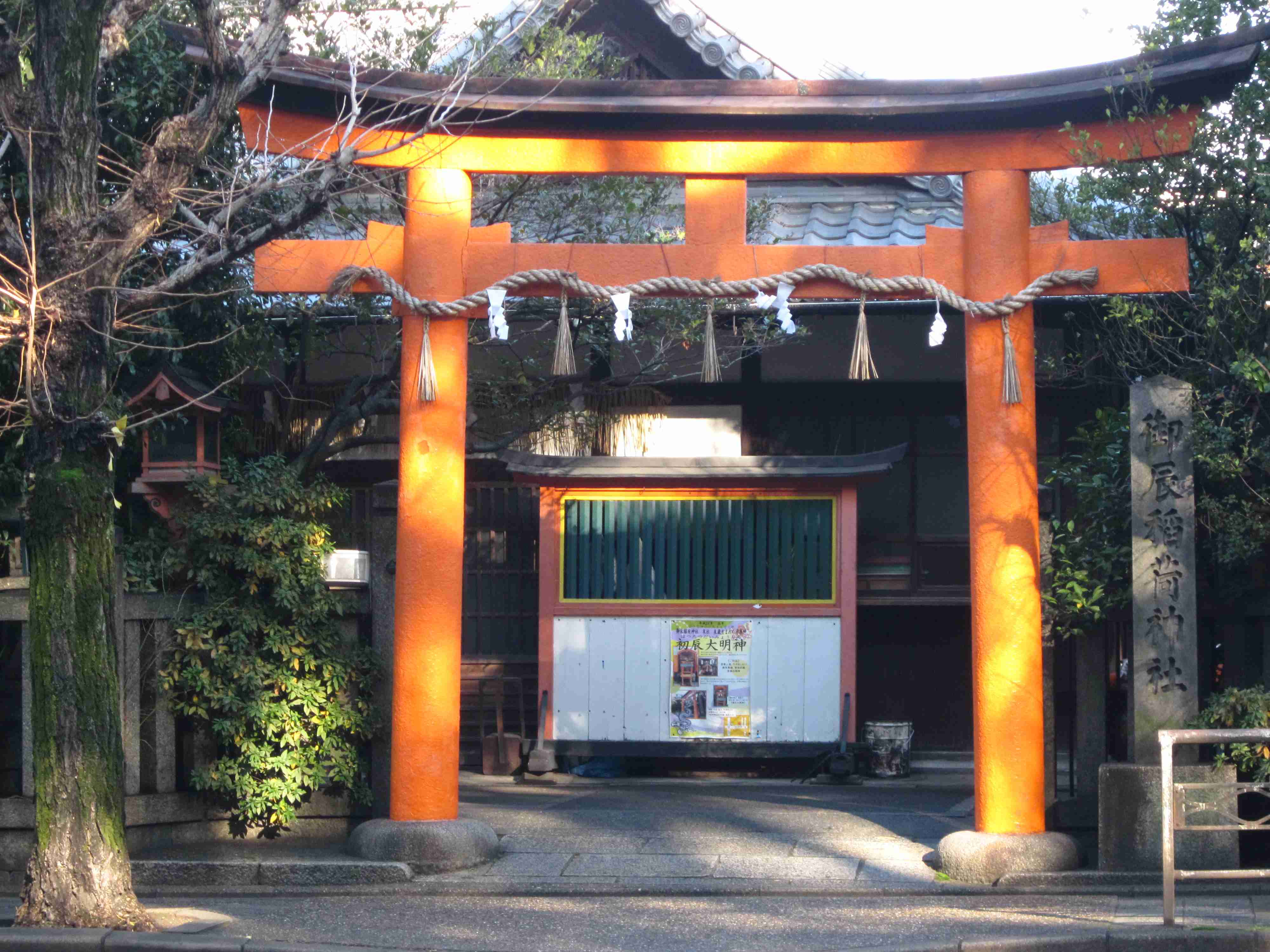 | 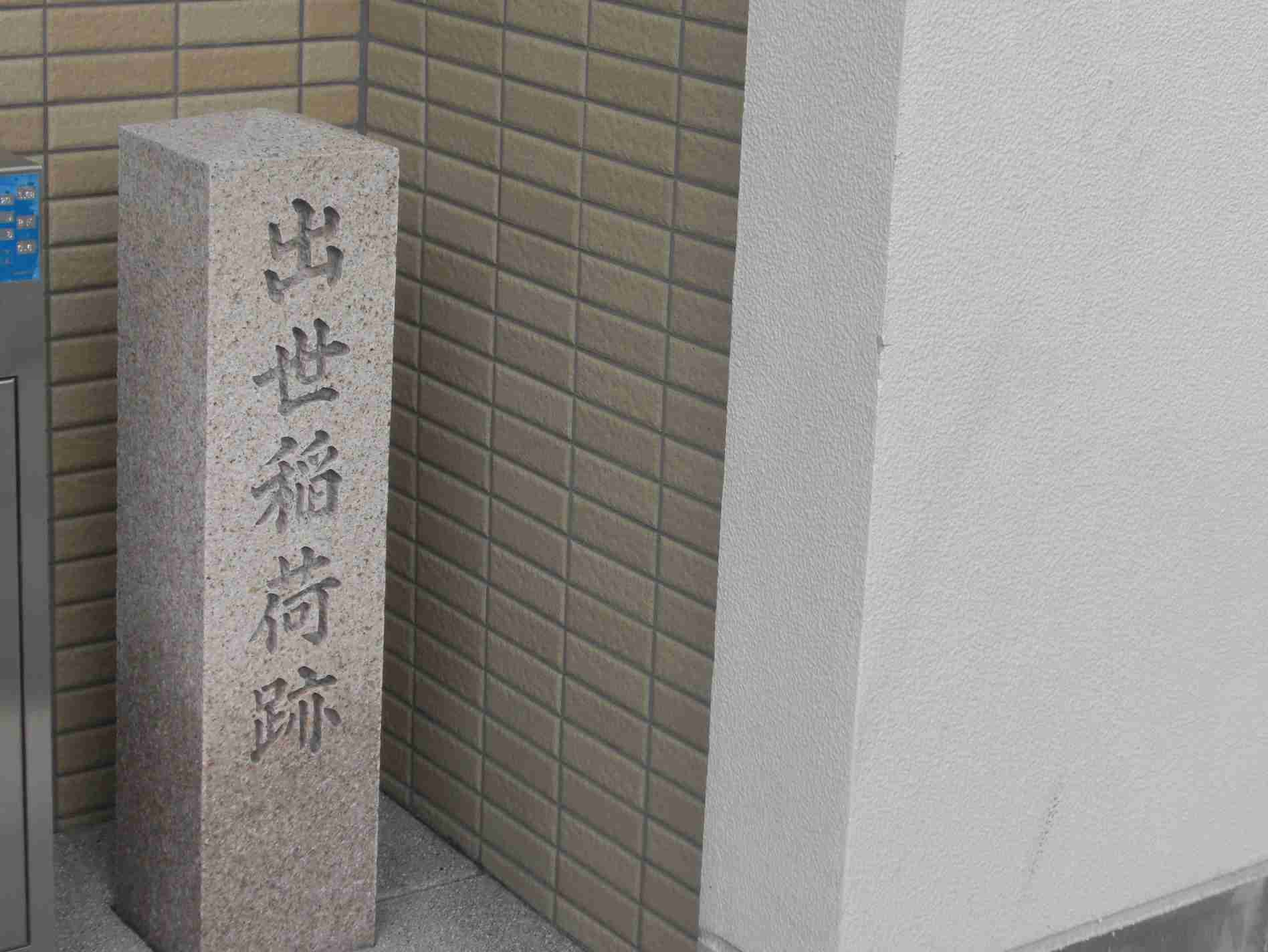 |
| Marutamachi St. Okazakimichi west-in | Kyuu-Nijo St. Senbon Ave.(Photo is the former site) |
| Shrine worships the Gods of performing arts. | 'Syusse' means the success in business. Pilgrims pray for the 'Syusse' here. |
| 'Gekkou Inari Dai-Myoujin Shrine' (founded) unknown | 'Ikuyo Inari Shrine' (founded) unknown |
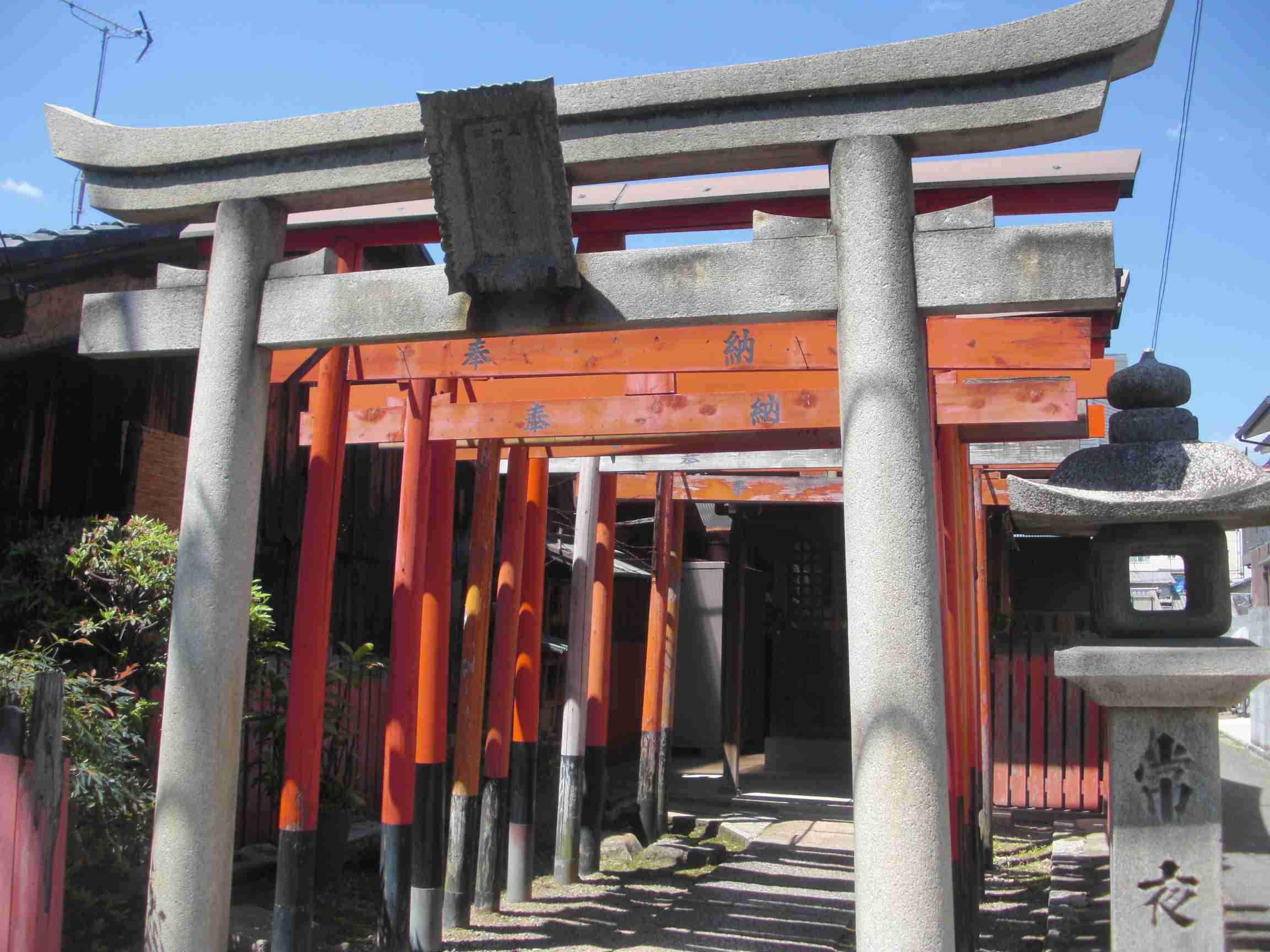 | 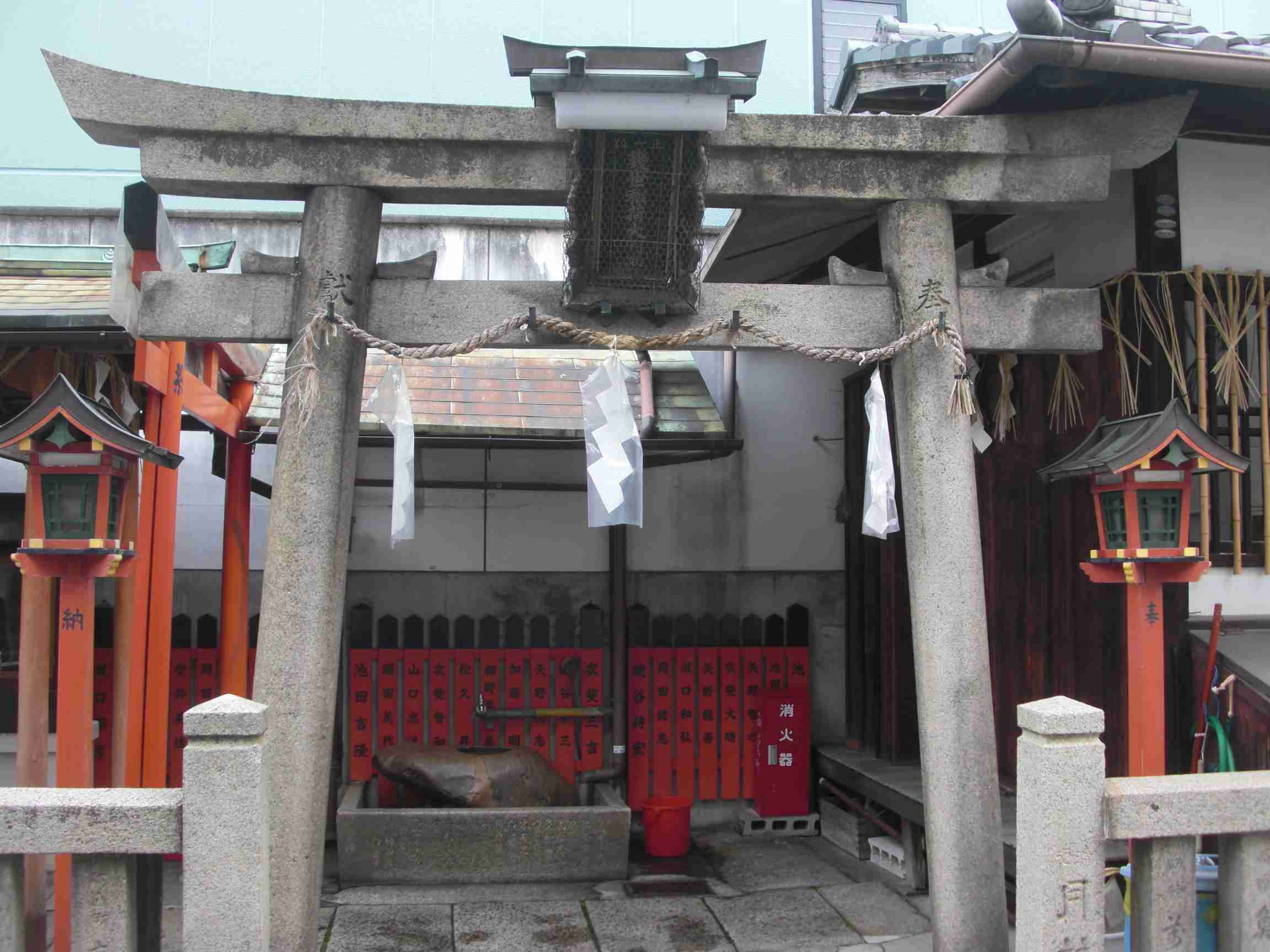 |
| Anekouji St. Shita-no-mori west-in | Ogawa Ave. Sanjo above |
| This shrine belongs to both Inari and Myoujin Sect. Shinto-parishoners of this shrine are highly religious. | The characters of 'Fushimi Inari' and 'Dai-Myoujin' are sculptured on the tablet of this shrine. |
| 'Kikuno Dai-Myoujin' (founded) unknown | 'Tatsumi Dai-Myoujin' (founded) unknown |
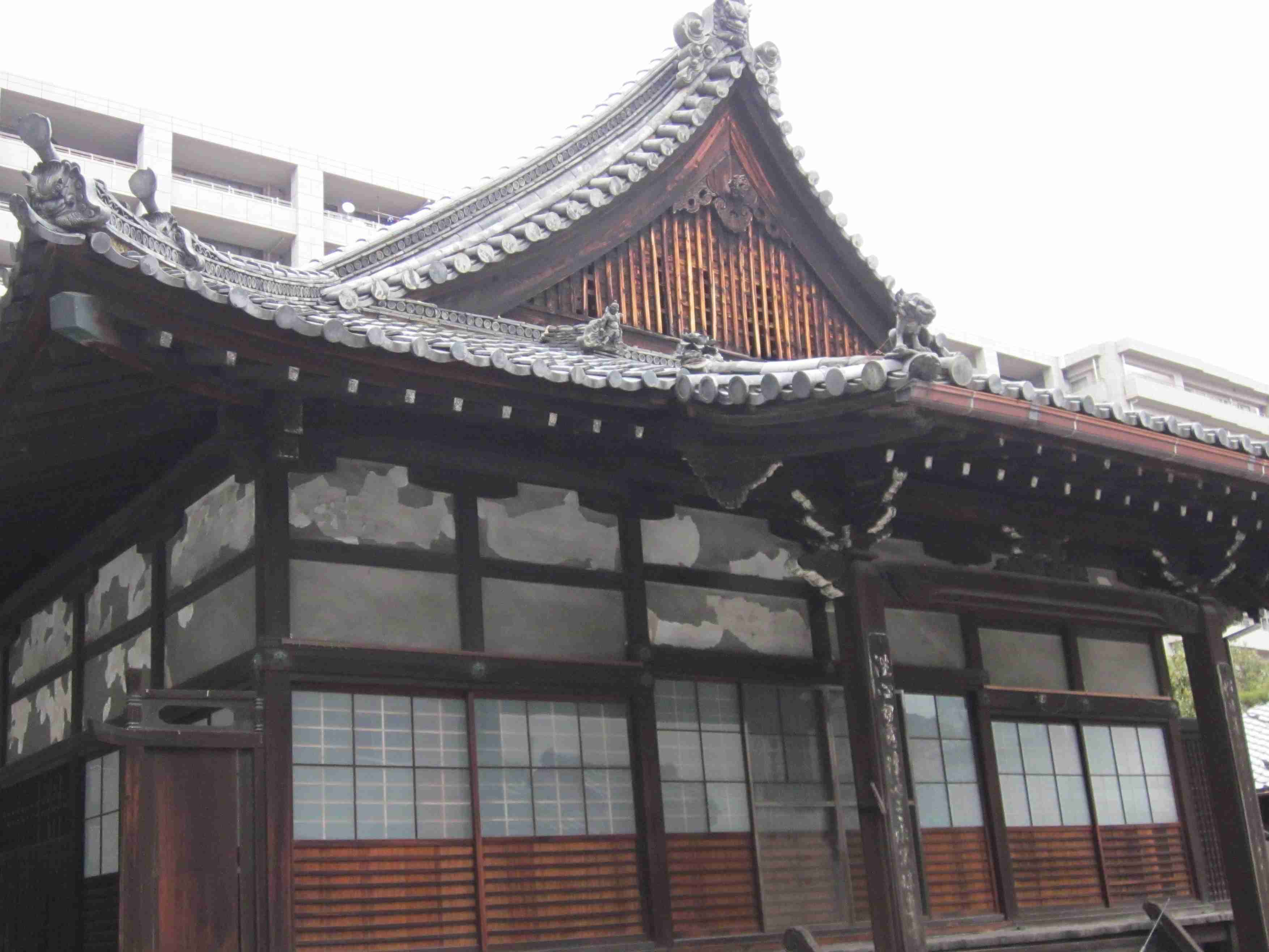 | 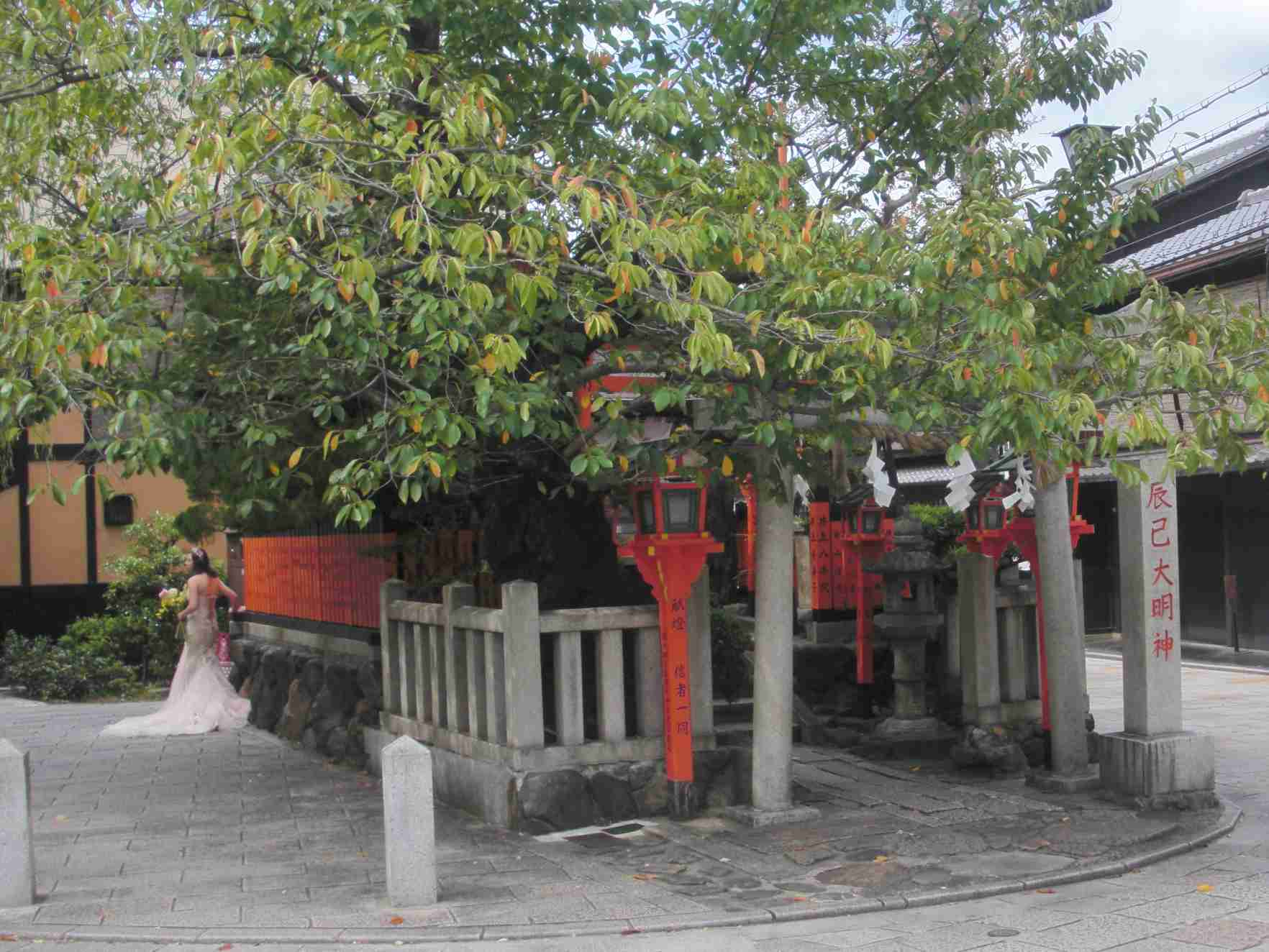 |
| Kawaramachi Ave. Nijo above | Shirakawa-minami St. Hanamikouji west-in |
| It is located in the precincts of Buddhist temple 'Ho'un-ji'. | It is a most famous Myoujin Shrine in Kyoto becouse it is located beside 'Gion Tatsumi Bridge'. |
| 'Kasasagi Dai-Myoujin' (founded) unknown | 'Mitsumori Dai-Myoujin' (founded) unknown |
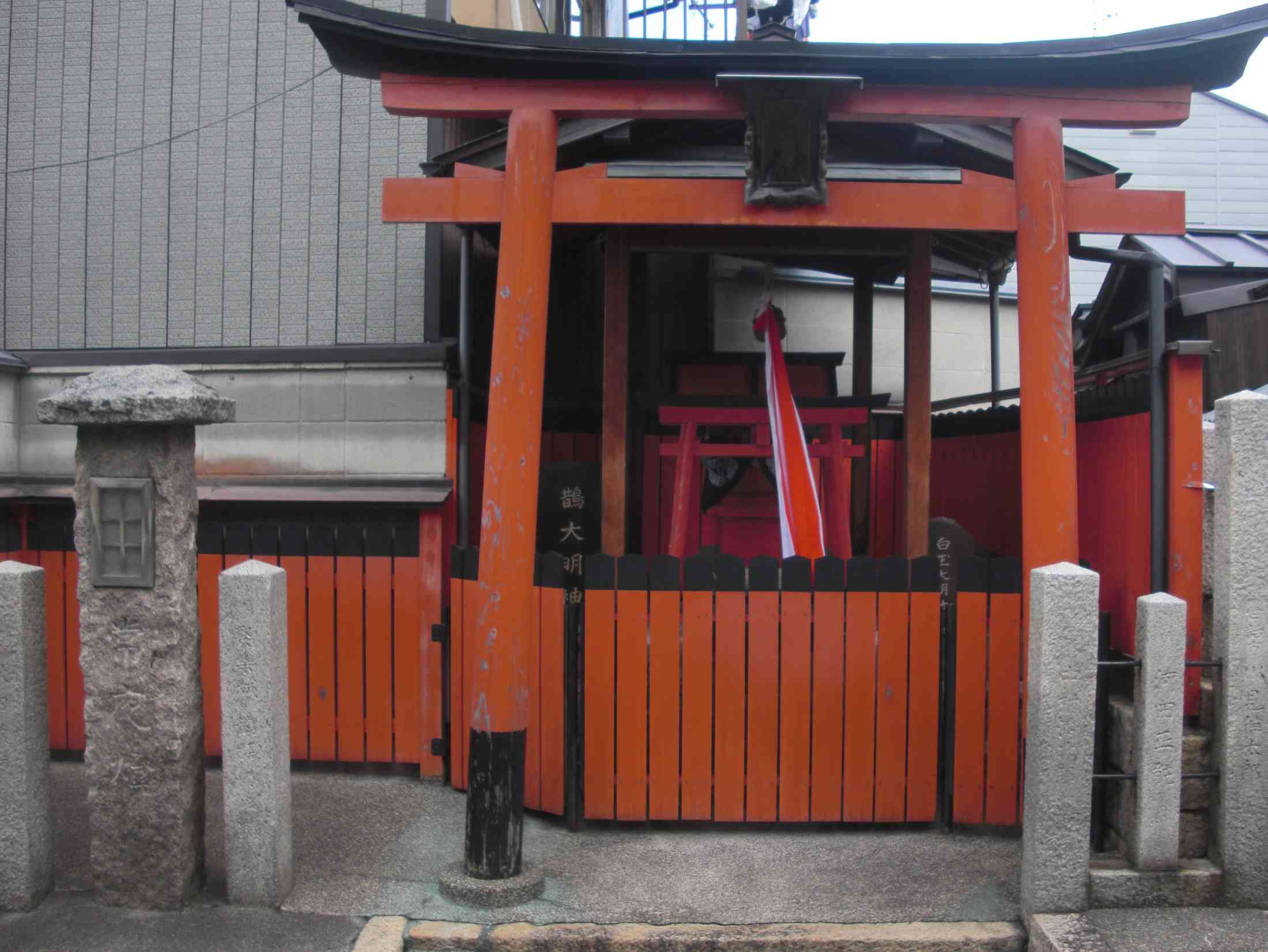 | 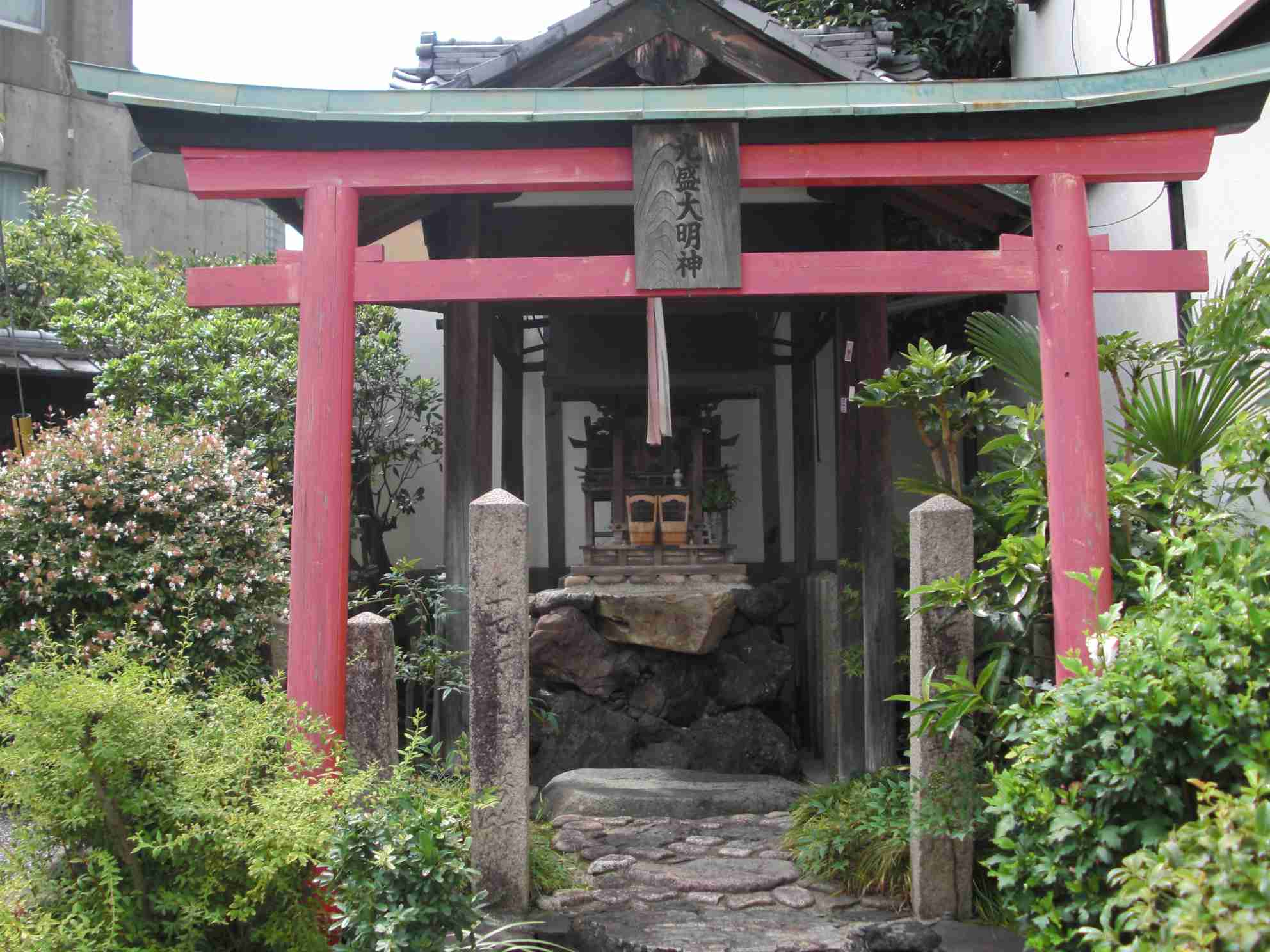 |
| Matsuyacho Ave. Demizu above | located in 'Kami-Shichiken' (Kitano) |
| 'Kasasagi' means magpie. Flights of magpies appear in a traditional Japanese poem. | (enshrined deity) Teduka taro Mitumori who died in a battle at Juei 3 (1184), and became Dai-Myoujin. |
| 'Ayako Tenman-gu' (founded) unknown | 'Kitano Tenman-gu' (founded) Tenryaku 1 (947) |
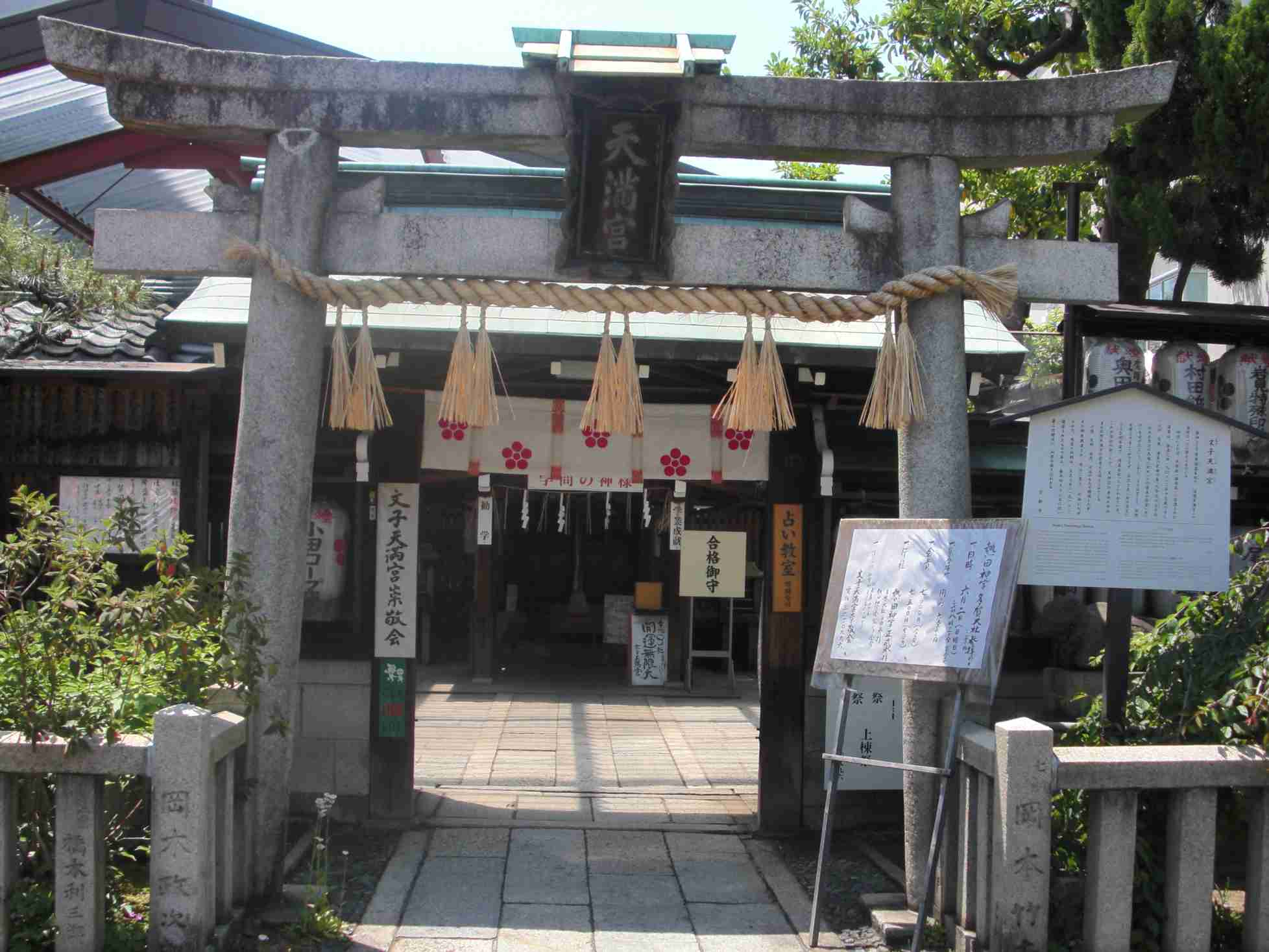 | 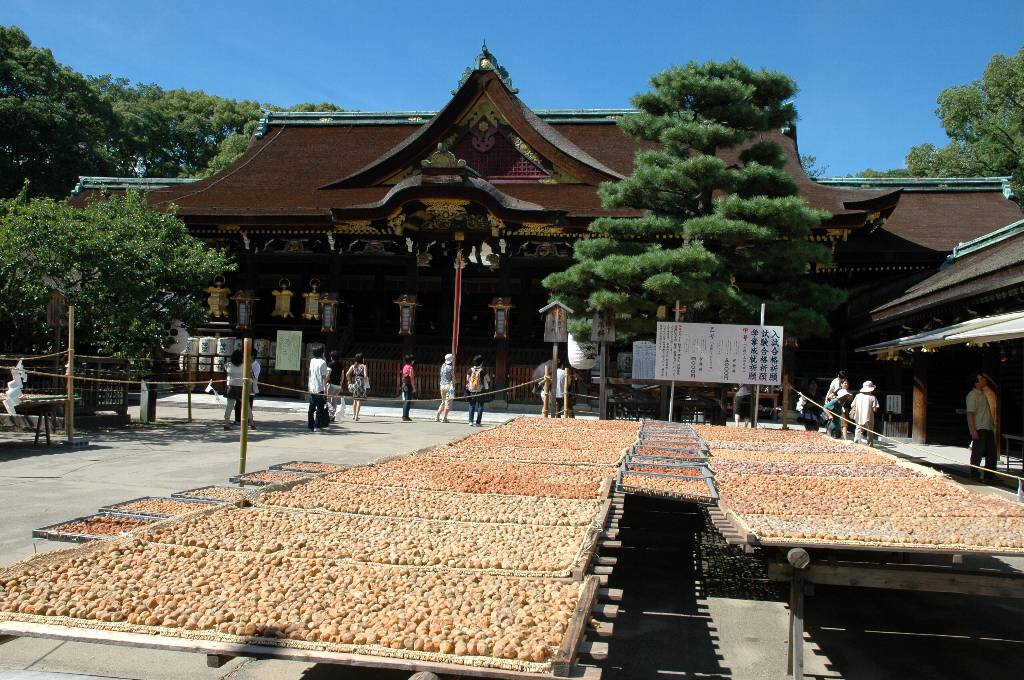 |
| Ainomachi Ave. Hanayacho below | Imadegawa St. Onmae west-in |
| It is the predecessor of Kitano Tenman-gu. Tenjin Worships of Sugawara no Michizane occured here. | It is the Main Shrine of Tenman-gu. (Photo is a scene where plums are dried in the sun.) |
| 'Sugawarain Tenman-gu' (founded) unknown | 'Kobaiden Shrine' (founded) unknown |
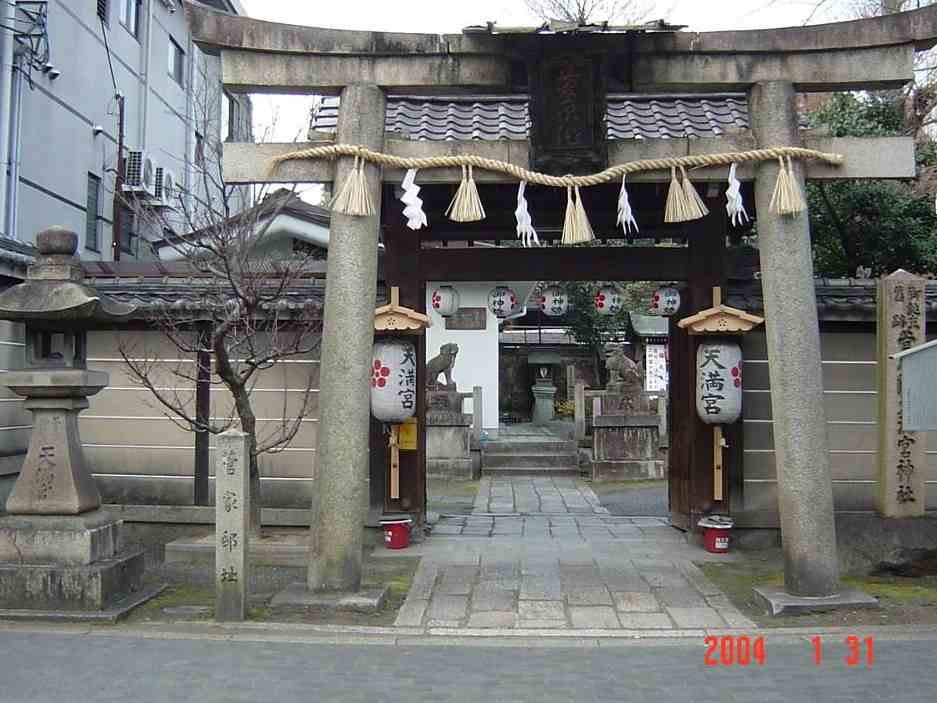 | 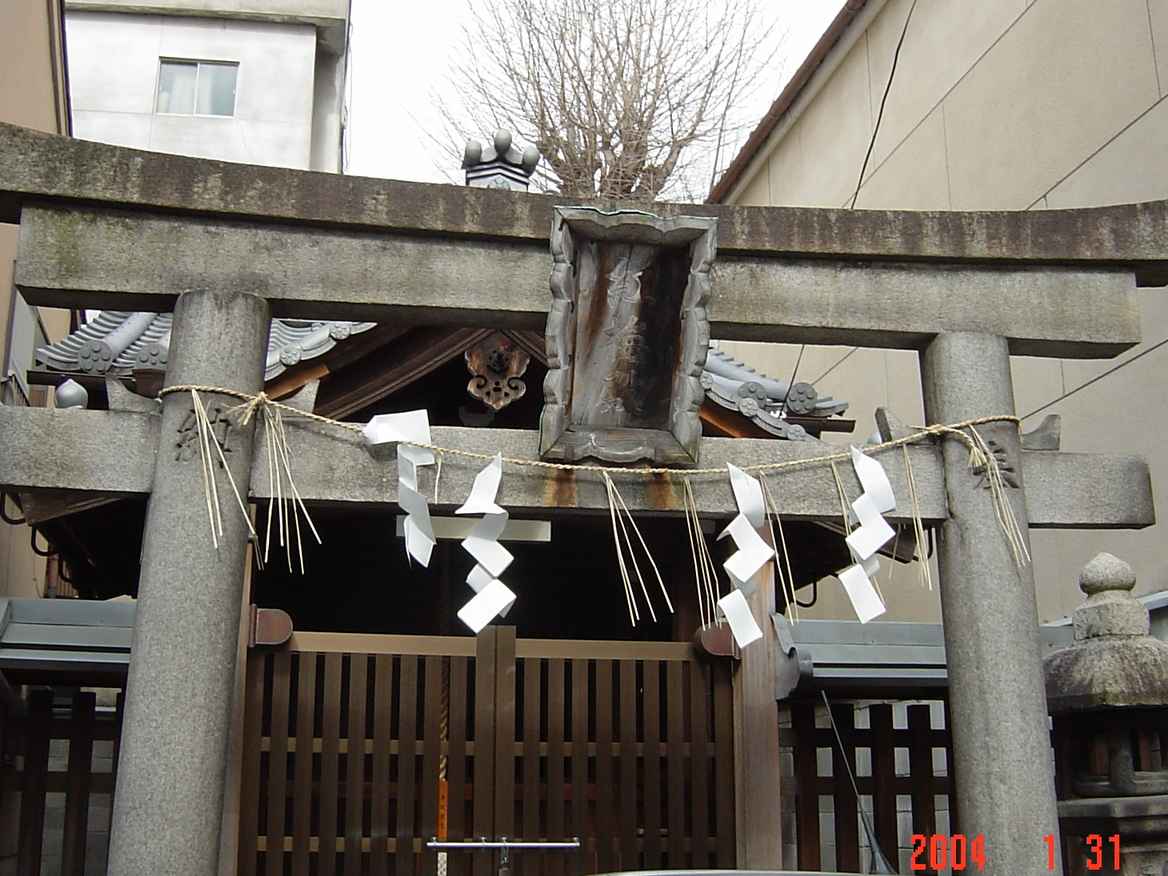 |
| Sawaragicho St. Karasuma west-in | Bukkouji St. Shinmachi west-in |
| Sugawara no Michizane was born here. Here was his father's house. | (enshrined deity) Sugawara no Koreyoshi who is father of Michizane. |
| 'Nishiki Tenman-gu' (founded) Chohou 1 (999) | 'Reikouden Tenman-gu' (founded) Kan'nin 2 (1018) |
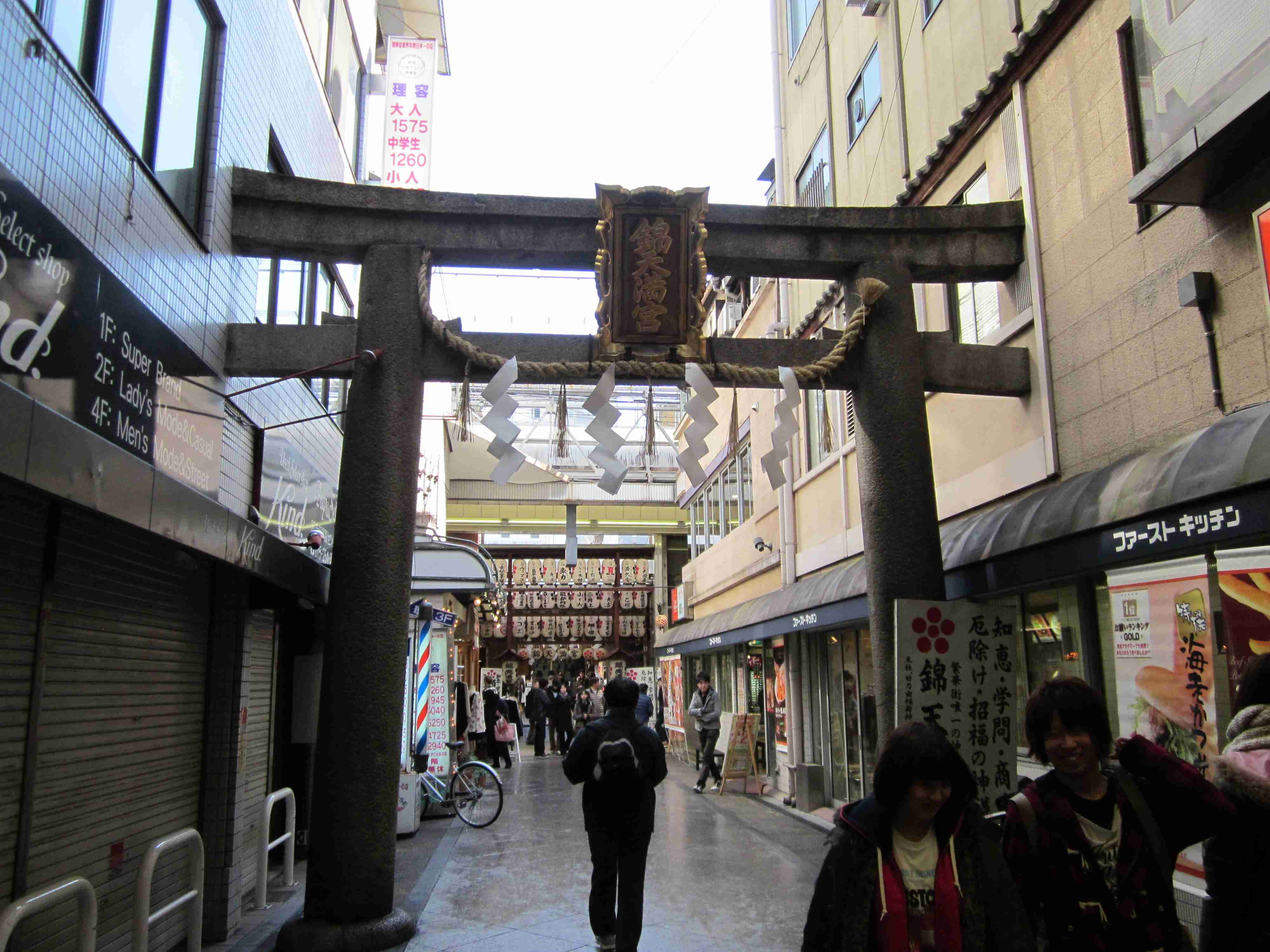 | 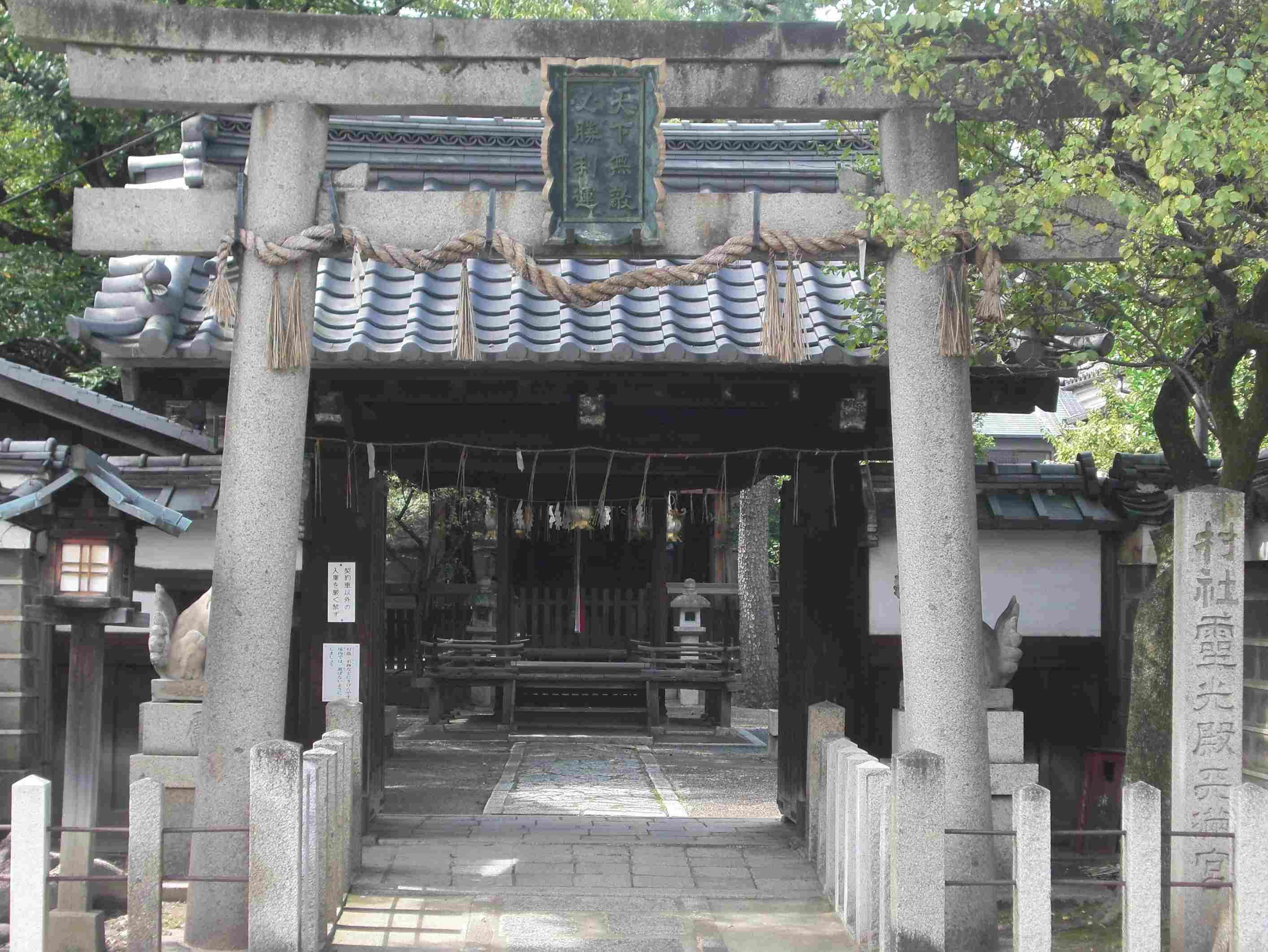 |
| Nishikikouji St. Shin-Kyougoku Ave. | Shinmachi Ave. Imadegawa below |
| For foreigners, it is a most famous Tenman-gu Shrine which is located near Nishiki Market. | It was transfered from Kawachi in Osaka at Horeki 11 (1761). |
| 'Hiyoke Tenman-gu' (founded) Tensho 7 (1579) | 'Suika Tenman-gu' (founded) Encho 1 (923) |
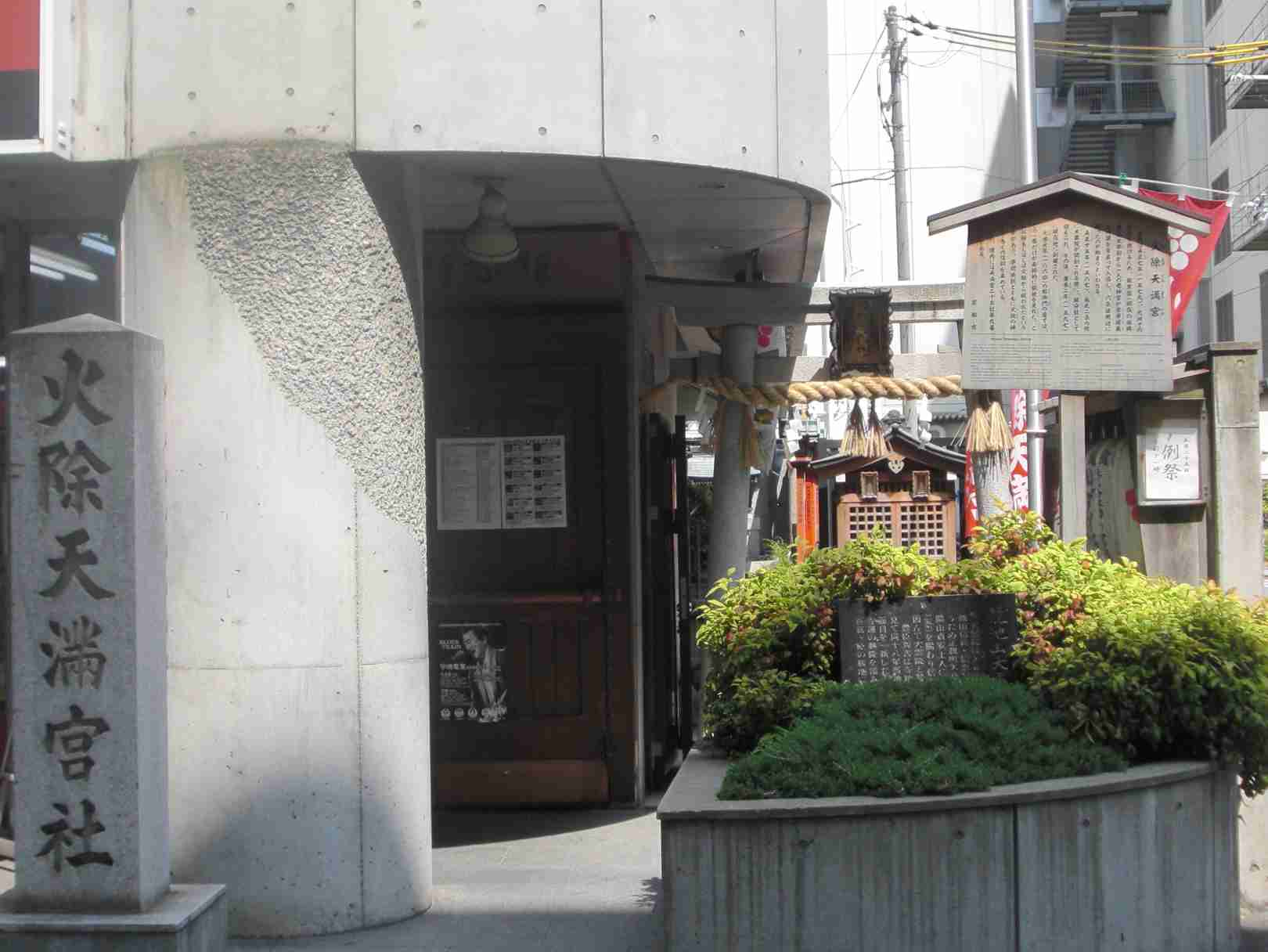 |  |
| Teramachi Ave. Shijo below | Horikawa Ave. Kami-goryomae above |
| 'Hiyoke' means the fire prevention. Pilgrims pray for the 'Hiyoke'of their houses here. | It was founded earlier than 'Kitano Tenman-gu' which is its main. |
- Main enshrined deities of 'Iwashimizu Hachiman-gu' is the 15th Emperor Oujin who became Great War Hero (Hachiman Daibosatu) after his death.
| 'Wakamiya Hachiman-gu' (founded) unknown | 'Gosho Hachiman-gu' (founded) Koei 3 (1344) |
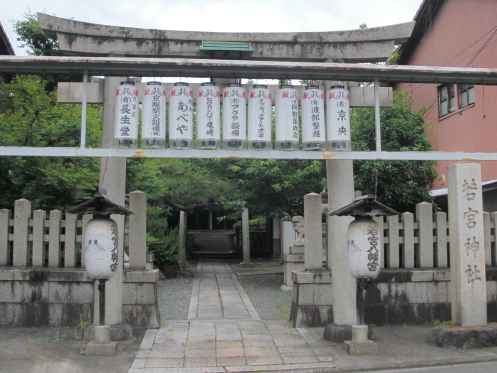 | 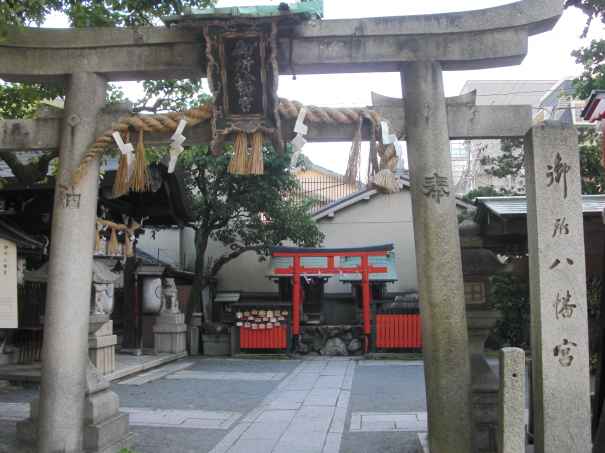 |
| Oomiya Ave. Kita-ooji below | Oike St. Takakura east-in |
| (enshrined deity) The 16th Emperor Nintoku who is a son of Emperor Oujin. So it is called 'Wakamiya'. | Ashikaga Takauji who is the 1st shogun (initiating Muromachi period (1333-1576)) founded it. |
| 'Kadode Hachiman-gu' (founded) unknown | 'Kinkaku Hachiman-gu' (founded) Teikyou 2 (1685) |
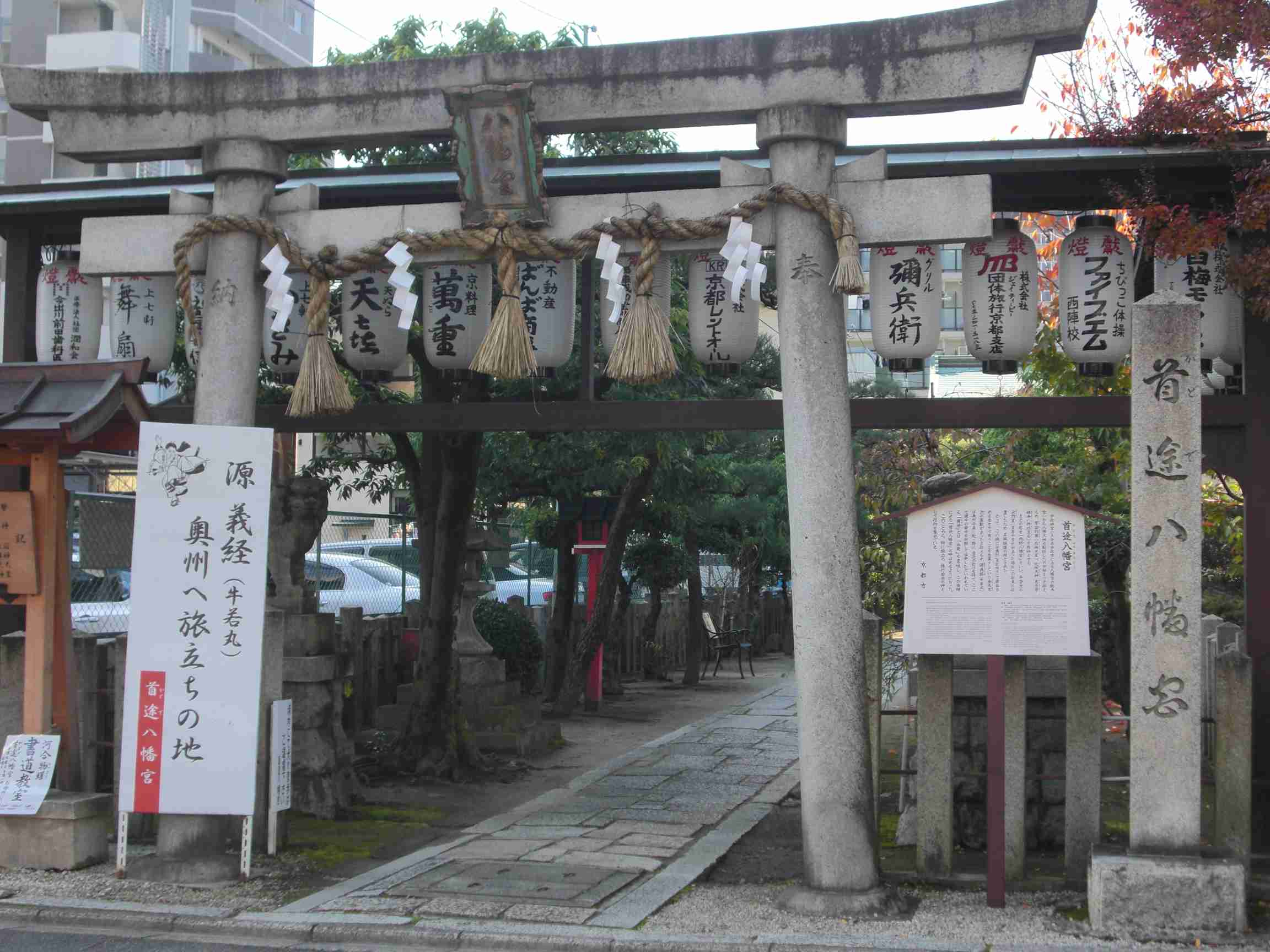 | 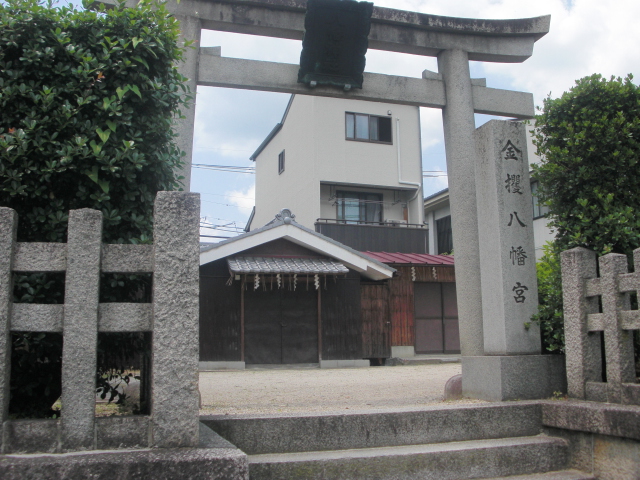 |
| Chiekouin Ave. Imadegawa above | Nishi-ooji Ave. Rozanji below |
| 'Kadode' means the departure of the journey. Pilgrims pray for their safety of the journey here. | 'Kinkaku' means genuine. So its enshrined deity is the 15th Emperor Oujin. |
| Another 'Wakamiya Hachiman-gu' (founded) (1922) | 'Houjuji Temple' (invited) unknown |
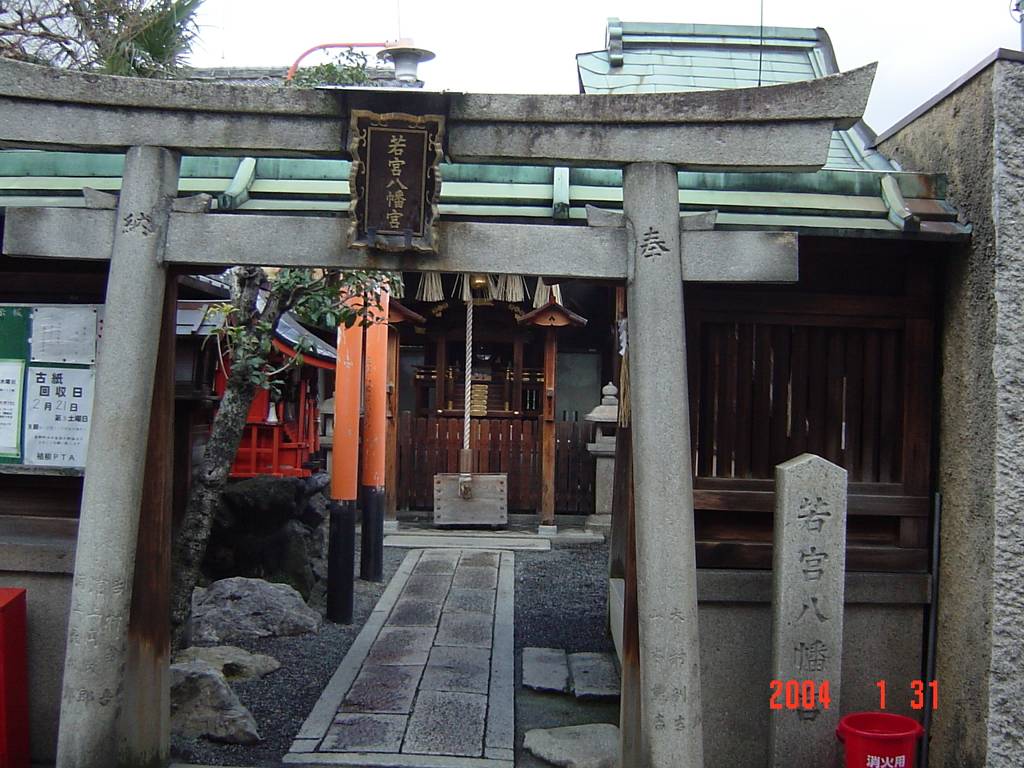 | 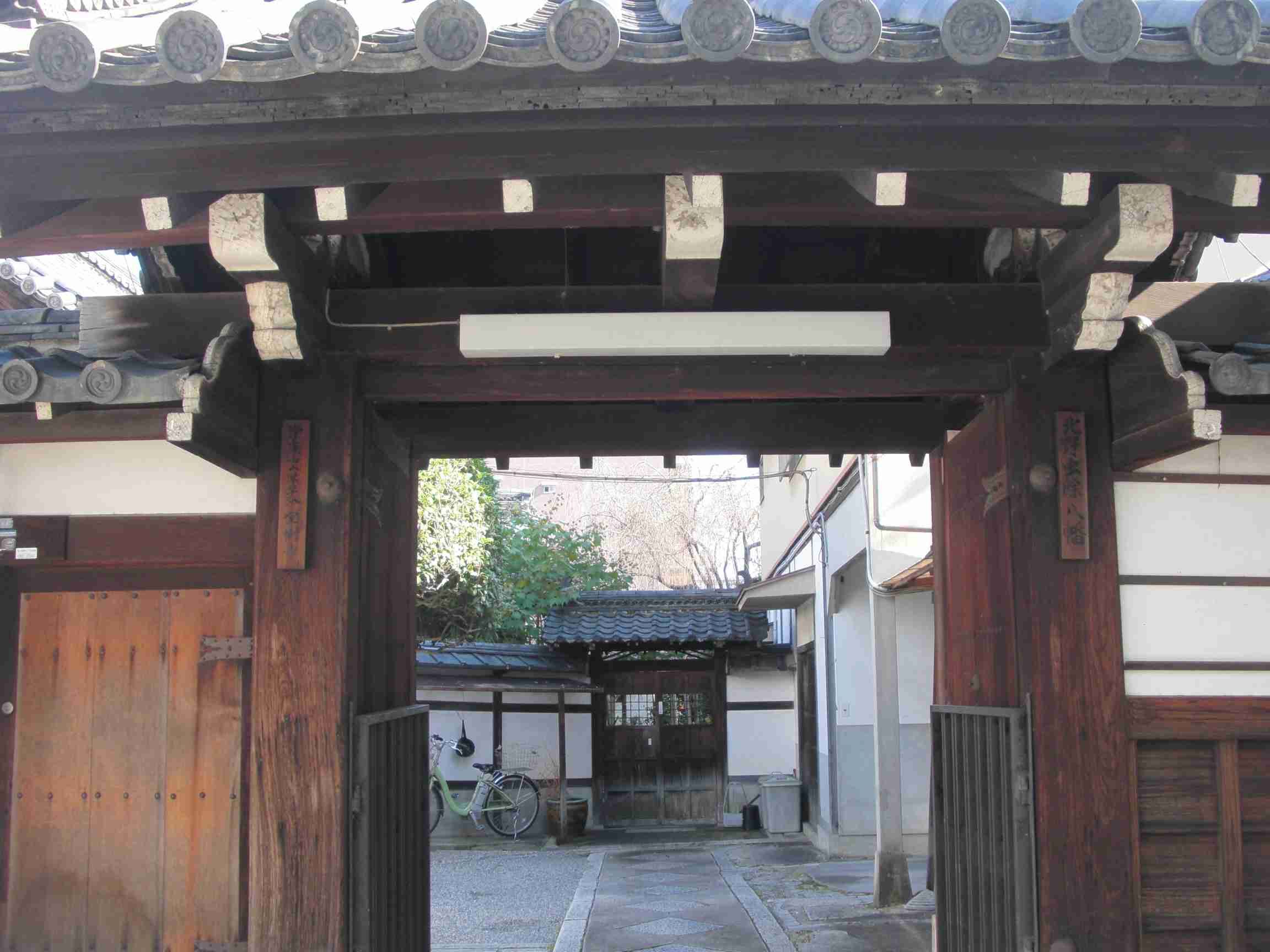 |
| Wakamiya Ave. Rokujo below | Shichihonmatsu Ave. Sasayacho below |
| Minamoto no Yoshiie was born here. He was the strongest general in 11th Century and believed in Hachiman. | Hachiman God was invited into this Buddhist temple for extermination of harmful insects. |
| 'Takamatsu Shinmei Shrine' (founded) Eiroku 8 (1565) | 'Sakuranomiya Shrine' (founded) Engi 10 (910) |
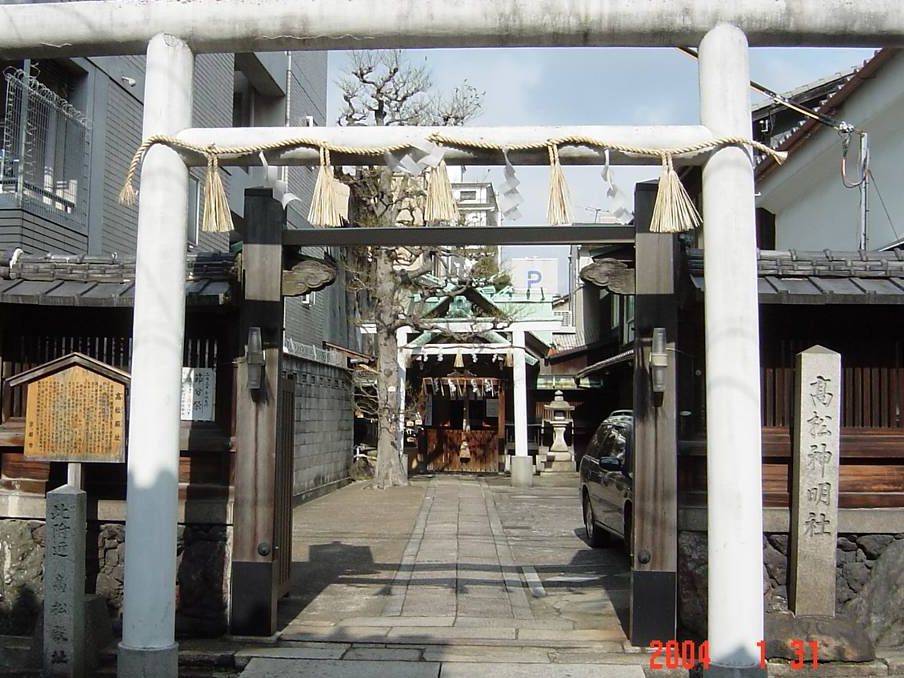 | 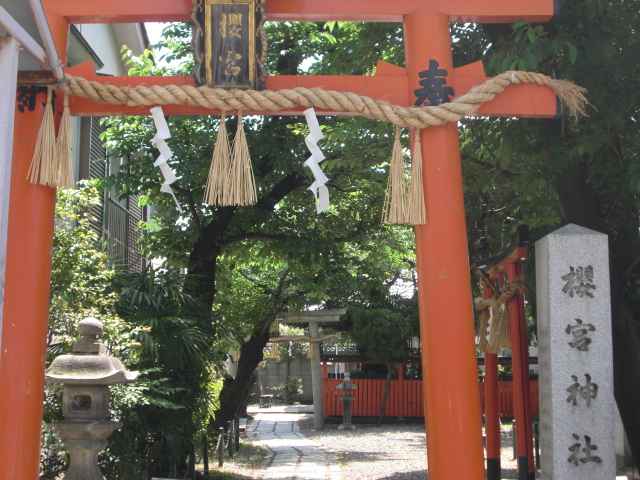 |
| Anekouji St. Shinmachi west-in | Demizu St. Senbon east-in |
| (enshrined deities) Amaterasu-Omikami and Shinmei Jizo whom Sanada Yukimura prayed for his children. | (enshrined deities) Amaterasu-Omikami and so on. It is located in 'Shinmei' town. |
| 'Gojo-in Temple' (founded) Houki 2 (771) | 'Kan'non-ji Temple' (founded) Enryaku 7 (788) |
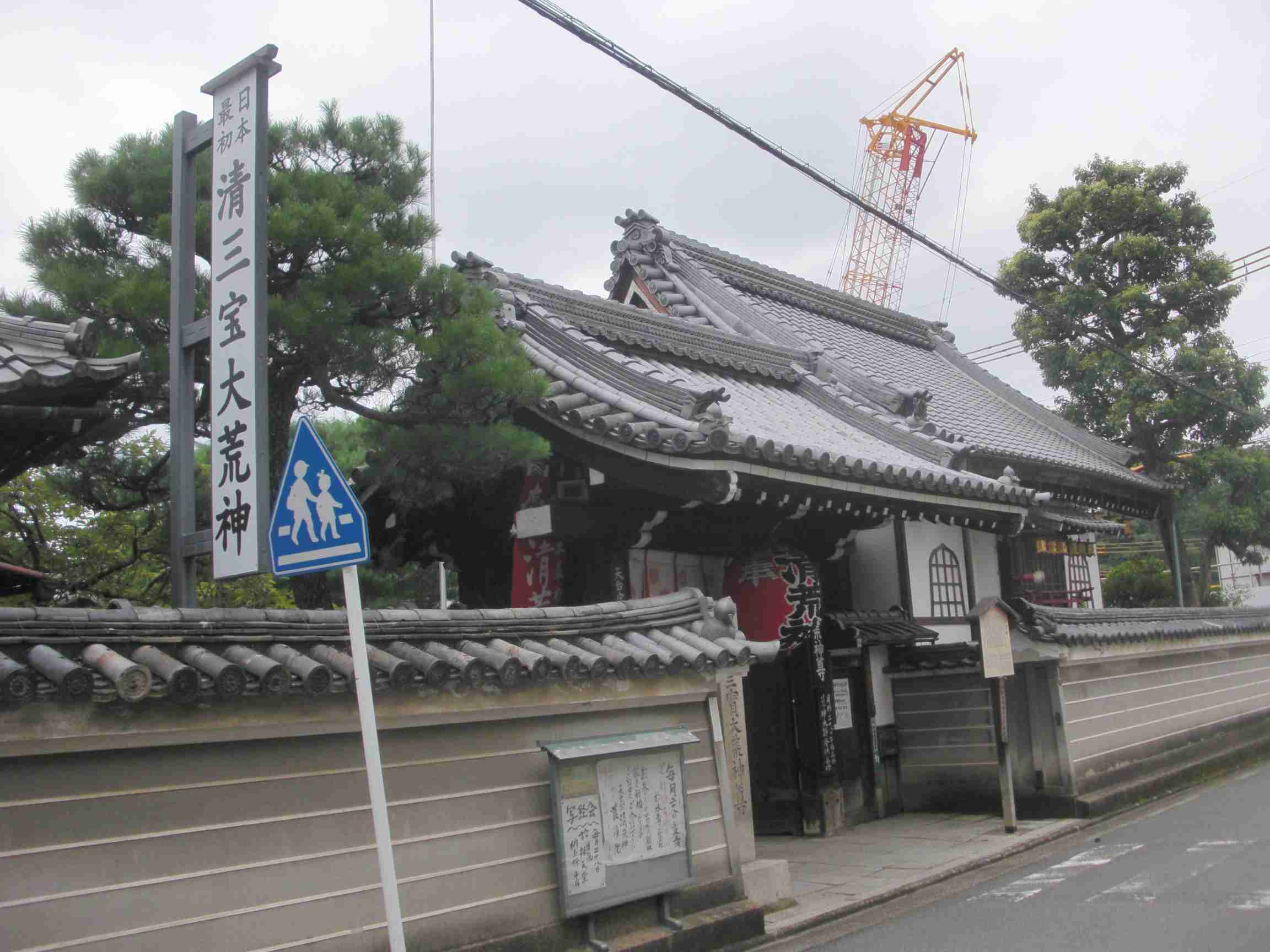 | 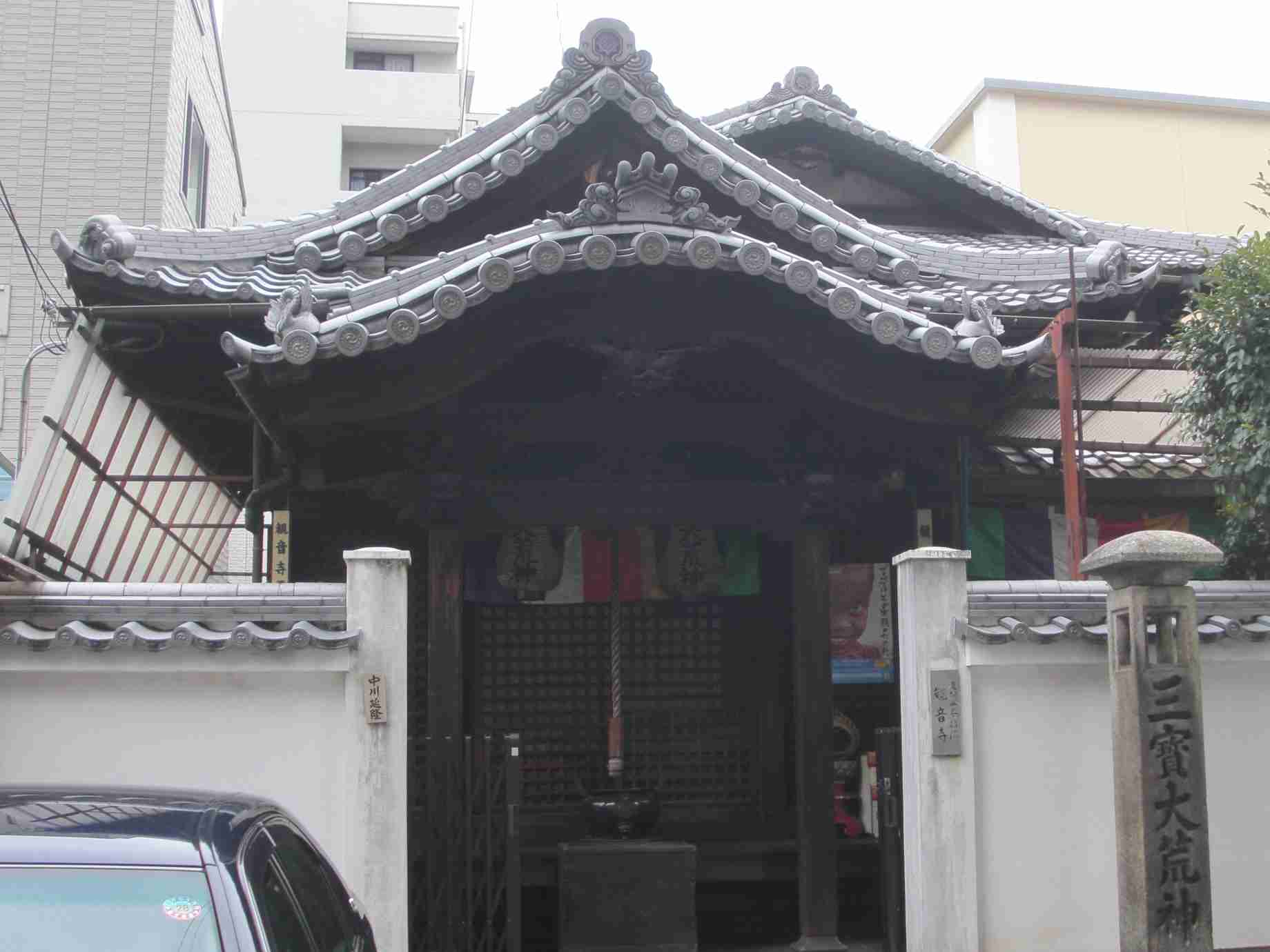 |
| Konoe St. Teramachi east-in(near Kojin Bridge) | Samegai Ave. Bukkouji below |
| (invited enshrined deity)Kiyoshi Sanpo Dai-Kojin. It is commonly known as Kiyoshikojin. | (invited enshrined deity)Sanpo Kojin who is guardian deity of the three jewels (Buddha、Dharma and Sangha). |
| 'Mikane Shrine (founded) Meiji 16 (1883) | 'Kotsuu Shrine' (divided) Syowa 39 (1964) |
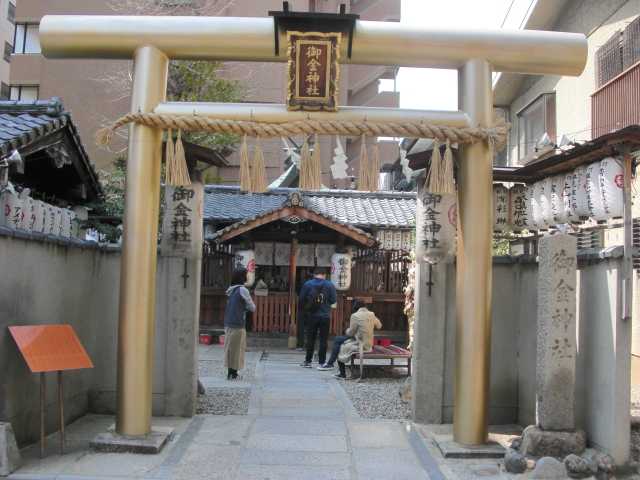 | 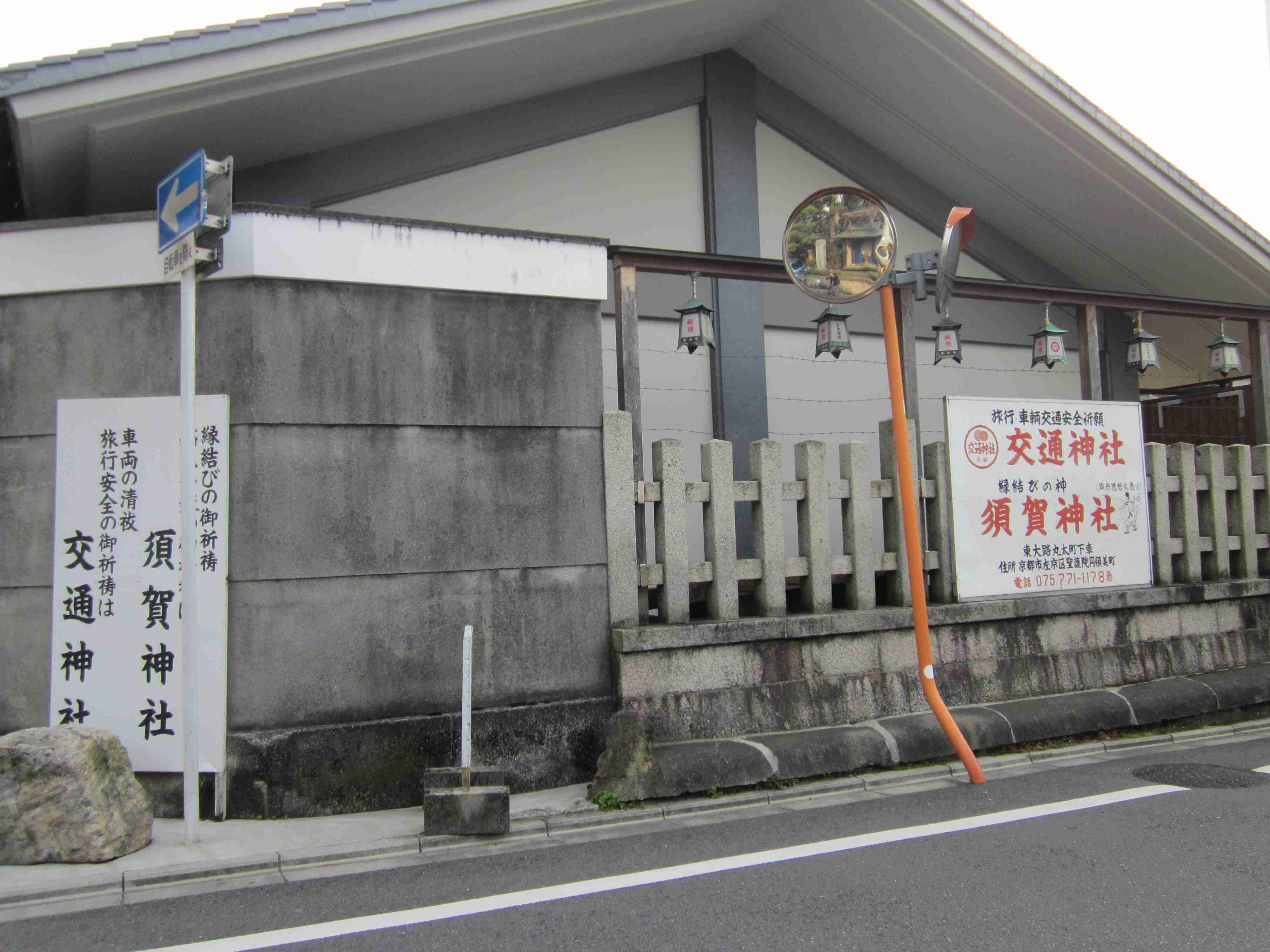 |
| Nishinotouin Ave. Oike above | Kasuga-kami St. Yoshida-Higashi west-in |
| (enshrined deity)Kaneyamahiko-no-Mikoto. 'Mikane' means money. | 'Kotsuu' means the traffic. Many people pray for their traffic safety here. |
- In Kyoto, a talisman of the following Shrines to prevent traffic accidents is tagged to many cars.
- 'Tanukidani Fudou-in'(located at north-east area (Shirakawa St. Mansyu-in-michi east-in)
- 'Jonangu'(locatede at south area)